#mansion with snorkeling reef in the house
Text
Key West's Top 4 Attractions
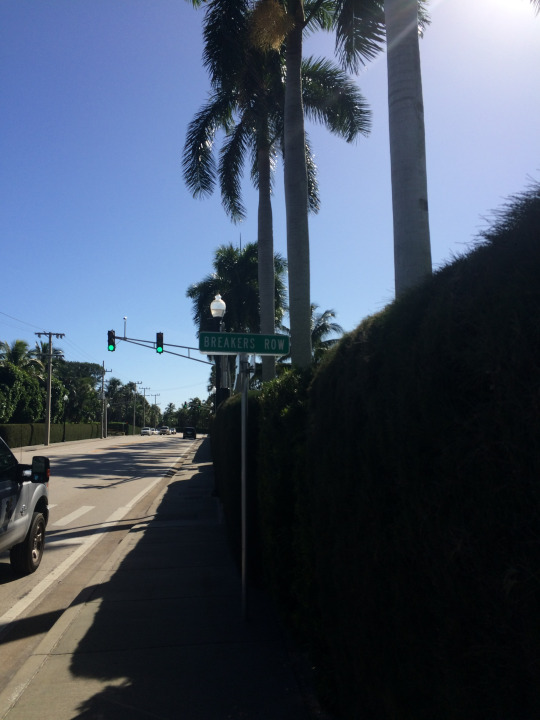
Whether you're visiting Key West for the first time or a seasoned visitor who hasn't been since you were a child, you'll find enough to see and do. Here are some top sites to visit in Florida's oldest city, from the iconic Southernmost Point to the Butterfly and Nature Conservatory.
The Florida Keys Eco-Discovery Center, located on the historic Truman Waterfront in Key West, provides a variety of educational displays. The center focuses on the Florida Keys's marine environment and educates youngsters about conservation, biodiversity, and the advantages of reefs. The center has a 2,500-gallon coral reef tank and instructional materials about reefs, mangroves, and ocean life.
The Florida Keys have a diverse ecology with several fauna and bird species. In addition to aquatic life, the islands provide a winter haven for snowbirds. The Eastern National Wildlife Refuge is also located in the Florida Keys.
Several endangered animals call the Florida Keys home. The Key Deer is one of the most endangered species. It is North America's smallest deer and is classified as a subspecies of white-tailed deer.
The Key West Butterfly and Nature Conservatory, located on Duval Street, is a peaceful haven. Hundreds of butterflies may be seen in their natural environment here. This lovely hideaway was named one of the top four things to do in Key West.
You may get a close look at exotic tropical butterflies at the Conservatory. These lovely species are brought in from Africa, Asia, and Australia. They have relatively brief lifespans, with many dying within two weeks.
The Eco-Discovery Center has an interactive exhibit on the Florida Keys National Marine Sanctuary. The interactive displays at the center illustrate how the Sanctuary strives to safeguard the Florida Keys' natural resources. It is entirely free to visit. The center is open daily from 9 a.m. to 4 p.m.
The Conservatory is also home to a variety of birds and fauna. This makes it an ideal location for a picture stop. The Conservatory is situated on Duval Street's southern terminus. From 9 a.m. until 5 p.m., the Conservatory is open. It is handicapped-accessible.
The Conservatory is worth a visit, particularly for children. The butterflies and birds will captivate them. They will also value the learning center. The center features displays and a movie about the life cycle of butterflies.
The Oldest House in South Florida, located at 322 Duval Street in Old Key West, is the state's oldest surviving residence. This mansion, erected in 1829, has weathered storms, fires, and other natural calamities. Richard Cussans, a ship's carpenter, constructed the home.
The home was built in the Classic Revival style at the time. It draws inspiration from colonial architecture. A spacious garden with lush tropical flora and a gazebo surrounds the home. It also has several endemic florae.
The residence is free and accessible to the public. Relics and papers on exhibit give a historical peek into the island's history. Visitors may also tour the home. A member of staff is available to answer queries.
Captain Francis Watlington and his wife, Emeline, lived at this residence. They had seven kids. The family occupied the place until 1972. The deed to the house was handed to the Historic Florida Keys Foundation when they sold it. The Old Island Restoration Foundation was appointed by the foundation to undertake the restoration project in 1975.
Whether you're visiting Key West, Florida, or simply passing through, the Southernmost Point monument is a must-see. It's a fantastic picture opportunity and a historical monument for the city. There are also several restaurants and stores with the word "southernmost" in their name. Snorkeling and diving are also available at Fort Zachary Taylor State Park.
It's a popular tourist destination for both residents and tourists. The concrete buoy may be seen near Whitehead and South streets. It is about 12 feet tall and seven feet broad. It is colored red, black, and yellow. It also has a plaque adjacent to it that explains the history of the island's black people.
The buoy is open to the public at all times. People from all over the globe come here to shoot photographs. You may also see it with a webcam. You can observe the traffic in real time this way. There is also a view of the Atlantic Ocean.
5 notes
·
View notes
Photo
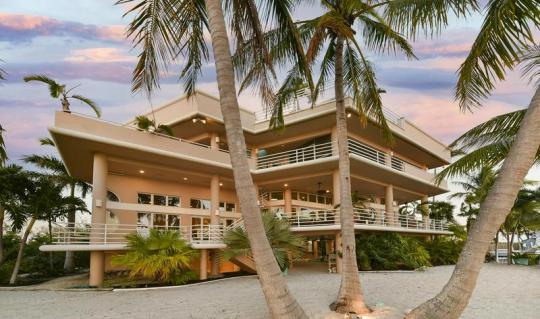
If you’re a multi-millionaire and snorkeling is your hobby, you can build a mansion like this in the Florida Keys and have the Tank Kings put a reef in your house so you can snorkel whenever you want.

The ground floor of the house is dedicated to snorkeling.
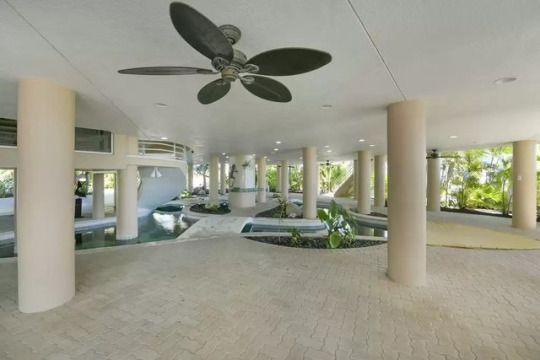

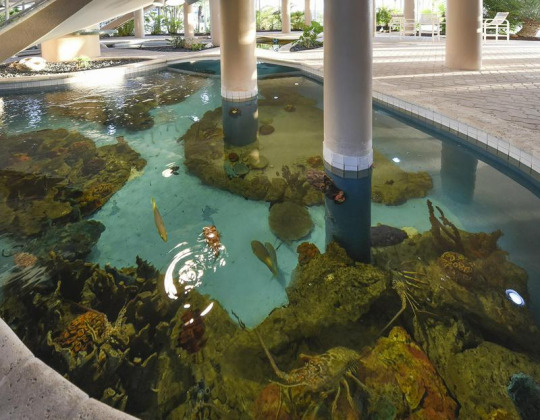
About the reef, the realtor says, “It’s a big monstrosity, but it’s actually very user-friendly. My seller actually got the installer of the aquarium to come teach him how to operate everything, and he operates it all from afar,” she explains. The massive system needs further explanation, and the agent said it does involve something of a learning curve, but that shouldn’t frighten away any interest.
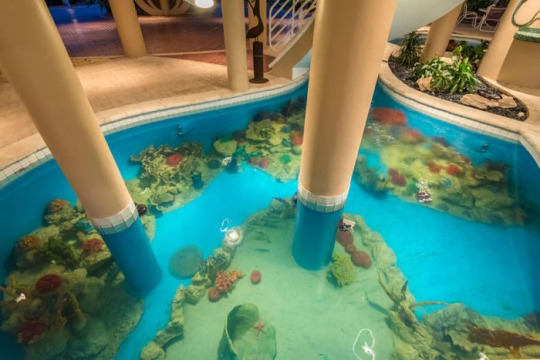
I guess he got tired of it, b/c it was listed for sale for $5.5 million, but this is only used as a 2nd home.
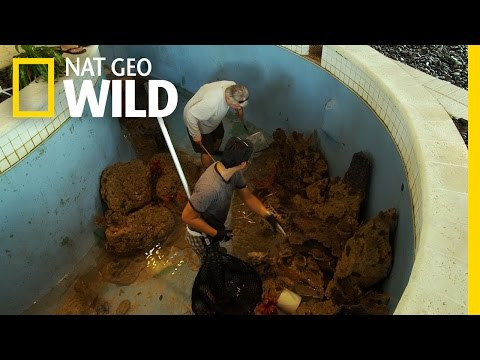
If you’re interested in seeing how they did it, the video is on YouTube.
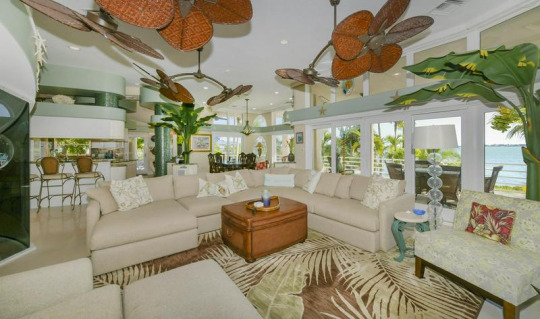
It has all the other fabulous mansion amenities, too, like a gorgeous living room.

Space age chef’s kitchen.

Home theater.
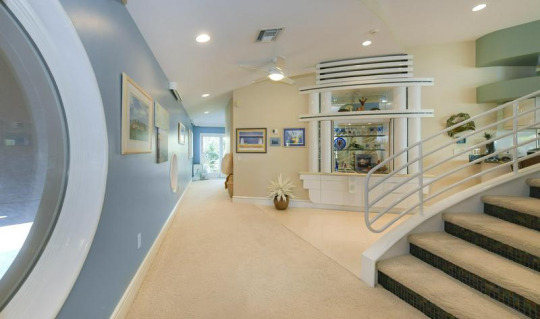
Built-in display cases for your collections and an elevator.
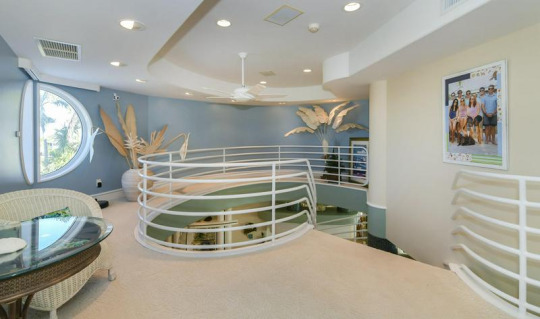
Nautical railings that look like a ship.

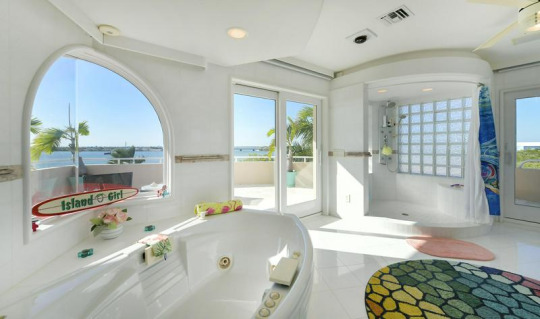
Large master bedroom and ensuite bath that have big terraces with a view.
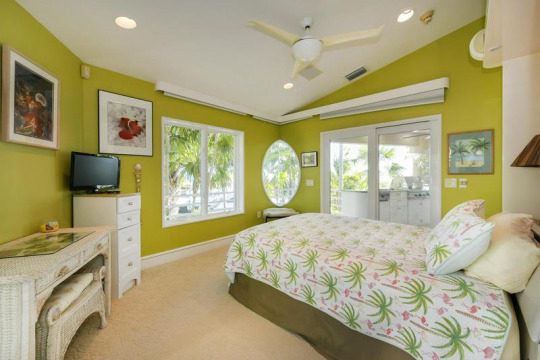
Beautiful secondary bedrooms.

A tiki bar, of course.
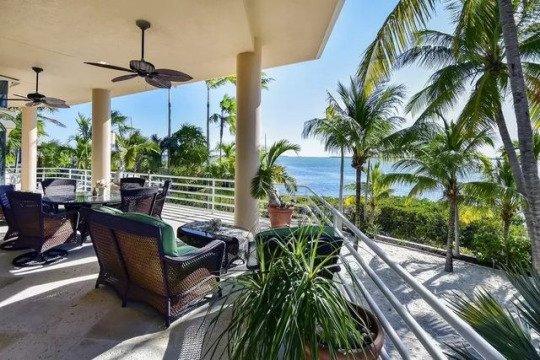
Patio with a view of the ocean.
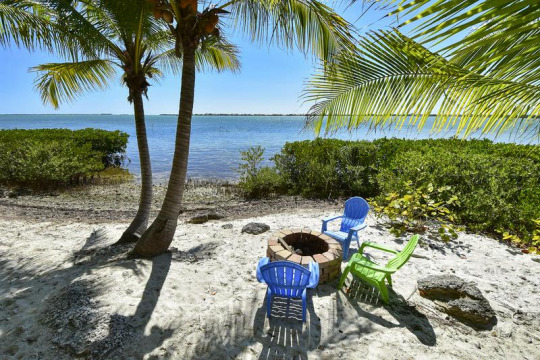
A private beach.
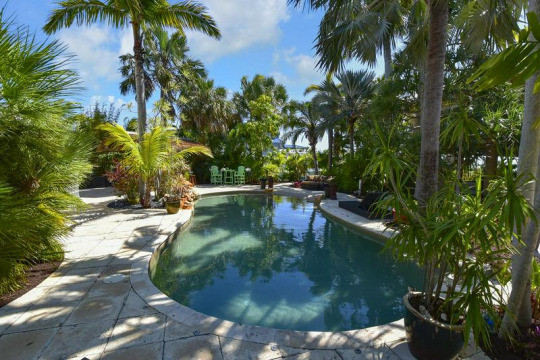
And a pool surrounded by tropical trees.
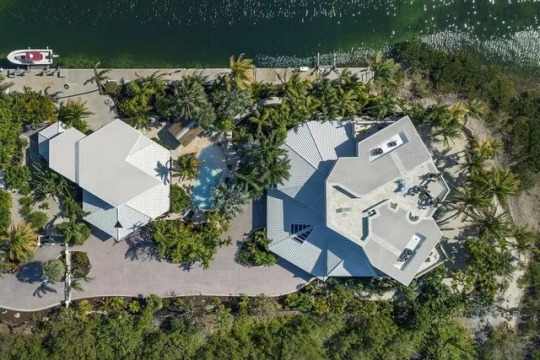
The building on the left is the garage with a guest apt. upstairs. In addition to the guesthouse, the garage has an angler’s room for fishing, boating, scuba, and snorkeling gear, as well as a pump room for the aquarium system.
https://www.remax.com/fl/big-pine-key/home-details/29550-w-cahill-ct-big-pine-key-fl-33043/1147358065144844086
#florida keys mansion#mansion with snorkeling reef in the house#tank king installation#indoor coral reef#indoor snorkeiling#long post
146 notes
·
View notes
Text
America’s Most Eligible 2 Diamond Scene: Explore the Reef with Mackenzie
You nod, and Eden swims over to distract Carson while you float closer to Mackenzie.
You: Hey, Mackenzie, want to do a little more exploring? Just you and me?
Mackenzie: You had me at ‘exploring’.
You and Mackenzie slip away from the others and head for an unoccupied stretch of the beach.
Mackenzie: This is more like it. I was thinking we’d never get the chance to swim alone.
You: Do you miss being roommates that much?
Mackenzie: Maybe I just miss being out of earshot from Carson.
Laughing, you both start to explore this stretch of the reef, searching for excitement.
Mackenzie: Jamie, check this out!
You turn to where Mackenzie is pointing… and find a little fish bobbing along the reef!
-Pufferfish!
You: Aw, look at the little guy!
Mackenzie: I’ve never seen one close up before. It’s… actually kinda cute.
You: Sure, it’s cute…
-Cute and deadly. Mackenzie +1
You: If that thing pokes you with its spines, I don’t wanna drag you to the emergency tent.
Mackenzie: Relax. This isn’t even one of the prickly ones!
Mackenzie: Plus, just look at his cute little face…
-But not as cute as you right now. Mackenzie +1
You: The ever-cool Mackenzie admiring the world’s cutest fish? Too bad I can’t get this on video.
Mackenzie: Hey, I’ve got to keep up my rep.
Mackenzie: But I guess I can live with you thinking I’m cute…
You: Good to know.
-I wish we could keep it! Mackenzie +1
You: What are the odds of Jen letting me bring this little guy back to the mansion?
Mackenzie: She’s always had a soft spot for you… but do you wanna put some helpless animal in the same house as Vince?
You: …Good point.
Mackenzie: At least we can admire it while we’re here, though.
Mackenzie waves at the pufferfish, and it darts away along the reef. As you watch it go, you spot a gap between some rocks…
You: Check it out! That’s gotta lead to somewhere cool.
You both dive under the water and swim through the narrow, underwater passage. Just when you’re starting to wonder how far it goes, the rock opens up around you, and you see light filtering in overhead…
Mackenzie surfaces in the natural spring before you. You can see her treading water as you swim upward…
You: …
-Slip an arm around her. Mackenzie +1
You swim up to Mackenzie’s side and slip an arm around her waist. She smiles as she turns to face you.
Mackenzie: Took you long enough.
You: No one told me this was a race.
Mackenzie: It wasn’t. You just make this cute face when someone catches you off-guard.
You: Thanks… I think.
-Splash her! Mackenzie +1
Moving as silently as you can, you swim up behind Mackenzie and send a wave of water right at her!
Mackenzie: Hey!
You: All’s fair in snorkelling and war!
Mackenzie: In that case…
She splashes an even bigger wave at you! You both wipe the water off your faces, laughing.
You: …Okay, I deserved that.
Mackenzie: Just trying to give as good as I get.
You float in the cool, still water for a while, admiring the serenity of the clearing.
You: It’s so peaceful here. So secluded. I wonder how long it’s been since anyone else came here…
Mackenzie: Maybe the last visitors left some stuff behind.
You: What, like sunken treasure?
Mackenzie: Only one way to find out…
Mackenzie dives again. The water is so clear that you can see her swim all the way to the floor, searching among the rocks and algae…
When she finally surfaces, she carefully holds her hands out to you.
Mackenzie: I knew it. Look.
-Antique Necklace
You: It’s beautiful.
Mackenzie: And all yours. Consider it a gift.
You: Thanks, Mackenzie…
-It’ll be the perfect keepsake. Mackenzie +1
You: Memories can fade, cool, antique necklaces always stay the same.
Mackenzie: Said no one, ever.
You: It’s a thing now. I’m making but it a thing.
You: My point is… today was a lot of fun, and it’s nice to have something to remember it by.
Mackenzie: Glad I could find you a memento.
-But I’d rather see it on you. Mackenzie +1
Mackenzie: …You would?
You: Yeah. Let me help you.
You gently take the necklace from Mackenzie and swim behind her so you can fasten it around her neck. She carefully adjusts the fit.
Mackenzie: I… I kinda feel like royalty.
You: You look like it too.
Mackenzie tucks a lock of hair behind her ear, trying to hide a flattered smile.
Mackenzie: Thanks.
Mackenzie: I know we should probably head back soon… but this was a great idea, Jamie.
Mackenzie: Sneaking off’s way more fun when you’re involved.
You: Maybe we can go reef diving again sometime.
Mackenzie: I’m in on one condition. Next time, you should dive for treasure.
You: Treasure?
-I’ll find the biggest pirate jewels you’ve ever seen. Mackenzie +1
Mackenzie: Careful. You’re talking to a girl who’s seen a lot of pirate movies.
You: I stand by my promises. I’ll either find you some epic pirate jewels or… er…
You: Give it my best shot?
Mackenzie: Either way, it’s gonna be fun to watch.
-I can do you one better… a kiss. Mackenzie +1
Mackenzie: Hmm… Do I have to go diving for that?
You: Why don’t you follow me and find out?
You swim down until your whole body is drifting beneath the water. Mackenzie dives down beside you, smiling, and she smiles even wider when you pull her close…
The feeling of her lips on yours is electric. Suspended beneath the water, the currents themselves seem to hold you in a shared embrace.
When your surface together for air, Mackenzie takes only a moment to catch her breath, then pulls you in for another, deeper kiss.
Mackenzie: You’re right… that was better than treasure.
Mackenzie: But you still owe me one.
You: So… that’s a yes to doing this again?
Mackenzie: Hell yes.
She high-fives you to seal the promise. Grinning at each other, you dive back beneath the water, then leisurely swim out to the warm, sunlit reef.
#playchoices#choices stories you play#choices ame#choices america’s most eligible#america's most eligible
1 note
·
View note
Text
27 of the Best Things to do in Bermuda
New Post has been published on https://www.travelonlinetips.com/27-of-the-best-things-to-do-in-bermuda/
27 of the Best Things to do in Bermuda
Looking for things to do in Bermuda? Look no further, because you are going to love these ideas. Often mistaken for a Caribbean vacation destination, Bermuda is actually located in the North Atlantic Ocean, but thanks to the Gulf Stream, it remains a comfortable temperature throughout the year.
Bermuda is only a 2-hour flight from New York, 3-hours from Toronto, and less than 7 hours from London England, making it an ideal beach vacation for everyone! With its colonial past, restaurants, and museums, there are plenty of things to see and do, even when the temperature dips to around 60 degrees. There are so many places to visit in Bermuda, it will surprise you for a small island.
Things to do in Bermuda
1. Take a Jet Ski Tour from South Hampton
Get out on the water and explore by Jetski
A Jet Ski Tour takes you all around the harbor and outer island to see places in Bermuda that you might not get to visit. This is a very cool way to see Bermuda’s multimillion-dollar mansions, the H.M.S. Vixen shipwreck, and to feed the fish that love flocking to the jet skis for little bits of bread. When you are on a jet ski, you really get to see the beauty of Bermuda’s turquoise waters.
2. World’s Smallest Drawbridge, Somerset Bridge
While on our jet ski tour we passed the smallest working drawbridge in the world. Somerset Bridge is a fun attraction in Bermuda connecting Somerset Island with the main island. Dating back to 1620, the bridge is such a symbol of Bermuda, it is featured on the Bermuda dollar. Operated by hand, the tiny 32-inch gap is just enough to allow a sailboat’s mast to go through.
3. Explore Saint George’s
Visit Saint George, Bermuda
Saint George is a UNESCO World Heritage Site as it is the oldest continuously inhabited English settlement in the Western Hemisphere. With Colonial buildings and cobblestone streets, it is a beautiful place to explore.
Even though it is located on the island’s eastern tip, it isn’t far away from Bermuda’s resorts and beaches. Nowhere is far in Bermuda. The narrow lanes take you back in time to the 18th century where the old merchant houses have been well-preserved.
4. Tour a Tall Ship
The Tall Ships of Bermuda
One of the most popular attractions in Saint George is the life-size replica of “Deliverance” a 17th-century ship that was built by the survivors of the shipwreck, Sea Venture. The Deliverance is known as “The ship that saved America” as it brought supplies to the colony at Jamestown, Virginia in 1610.
5. See the Unfinished Church
One of the most striking scenes on the island that we visited was the unfinished church of Saint George. One can only imagine how beautiful this Gothic church would be if it were completed, but due to many problems over the years, it was never done. And that is what gives it its charm. Due to funding problems and hurricanes, it was never completed, but visitors can explore the ruins for free.
6. Saint Peter’s Church
Dating back to 1612. Saint Peter’s Church is the oldest continuously running Anglican church outside of Britain.
7. Cathedral fo the Most Holy Trinity
Cathedral fo the Most Holy Trinity aka, Bermuda Cathedral is worth visiting the 155-step tower for views of Hamilton Harbour.
8. Stroll the Streets of Hamilton, Bermuda
We loved the town of Hamilton, Bermuda.
Named after the Governor of Bermuda Sir Henry Hamilton in 1788, Hamilton has a cosmopolitan flair that is Instagram-ready. The sea express ferry service is a great way to get to Hamilton from different parts of the island. Our hotel, the Fairmont Southhampton offered free ferry service to Hamilton. There are a lot of things to do in Hamilton, Bermuda so be sure to give it some time
9. Front Street
Hamilton is the capital of Bermuda and the colorful colonial buildings of Front Street are must visit when on the island. Grab an iced latte and stroll along the waterfront shopping for trinkets to take home.
Beaches of Bermuda
No trip to Bermuda would be complete without visiting its beautiful beaches. Bermuda is known for its pink sand, crystal clear turquoise waters, and powdery white sand. Here are some not-to-miss beaches when visiting Bermuda.
10. Bermuda’s Pink Sand Beaches
The Pink Sand Beaches are a great way to enjoy Bermuda
One of the top things to see in Bermuda are its beaches. There are so many of them that it is a good idea to get in your electric car or scooter to discover them. There are some beaches that are more famous than others. Here are a few to get you started.
11. Horseshoe Bay Beach
Named so because of its horseshoe shape, Horseshoe Bay offers a blend of turquoise waters and soft pink sand made up of crushed coral and calcium carbonate. It is one of Bermuda’s top attractions is Horseshoe Bay Beach. While on the beach you can rent everything from towels, chairs, and umbrellas to stand-up paddle boards, and boogie boards.
12. Elbow Beach
Epic views from the beaches of Bermuda
Located just outside the city of Hamilton, Elbow Beach is a very popular beach due to the fact that three different resorts are on it. And with good reason. Elbow Beach has a coral reef right off shore that is great for snorkeling. There is also a shipwreck just 100 meters (300 feet) from shore and you can join a guided snorkeling or kayaking tour to see it.
13. Warwick Long Bay
These are the top things to do in Bermuda
Warwick Long Bay is Bermuda’s longest beach at half a mile. With trees, long grass, and sand dunes lining the coast, it’s one of Bermuda’s most picturesque beaches.
14. Tobacco Bay Beach
Tobacco Bay Beach is a lovely small beach with limestone rock formations reaching 25 feet high offering shelter. There’s a beach bar here, and there’s great snorkeling. It’s located near Saint George’s.
15. John Smith Bay Beach
The private beach at the Fairmont Southampton in Bermuda
Another beautiful pink sand beach, John Smith Bay was named after Captain John Smith. Snorkeling is located right offshore, and it is a popular spot for diving. Especially night diving.
16. Sea Glass Beach
Black Bay and Sea Glass Beach in Hamilton are unique beach fronts where colourful sea glass has washed up upon the shore. Due to a glass-making factory that was once located here, the waste was dumped into the sea and it has since spit it back out creating a glassy waterfront. Taking glass from the beach is illegal. Please leave the glass behind for future generations to admire.
17. Walsingham Nature Reserve
Located in Hamilton Parish, the Walsingham Nature Reserve is known by the locals as Tom Moores Jungle. It is here that you’ll find many grottos and caves of Bermuda.
18. The Crystal and Fantasy Caves
Everyone loves exploring caves, and touring the Crystal & Fantasy Caves makes for a great trip. With azure blue underground pools and crystal chandelier clusters, these caves are beautiful. You can take a guided tour of both caves with floating pathways spanning clear blue lakes with crystallized soda straws hanging overhead. Each cave is a different experience, but you’ll miss nothing as they both have great lighting.
One very cool story we learned was how the Crystal Cave was discovered by two young boys searching for a lost cricket ball in 1905. Can you imagine how excited they were?
19. Blue Hole Park
Outdoor lovers will enjoy exploring Blue Hole Park’s caves and grottos. The Blue Hole is a popular swimming spot with a deep pool surrounded by mangrove trees. The Blue Hole isn’t the only grotto though, there’s also Castle Grotto, Walsingham, Subway, Deep Blue, Vine, and Fern Sink.
20. Glass Bottom Kayaking
Bermuda is filled with watersports opportunities, and one of our favorite ways to explore any coast is to go kayaking. There are guided tours around the island and Bermuda offers unique experiences with glass bottom kayaks to showcase its crystal clear waters. You can easily book a trip with your hotel concierge.
Different tours offer eco-adventures for marine life watching to see the HMS Vixen shipwreck or a paddle through Whalebone Bay to Walsingham Nature Reserve & Blue Hole Park where you’ll explore a 12-acre nature preserve.
21. Whale Watching
In March and April, humpback whales migrate through Bermuda. Whale watching tours are offered during this time to catch views of the 10,000 whales making their way north to the Arctic Circle.
22. Watch the Sunset from Gibbs Hill Lighthouse
The island of Bermuda is stunning.
While in the area, head out to Gibbs Hill for dinner at Bermuda’s highest point. The 185 step spiral staircase takes you up a 117-foot lighthouse for the best view of the island. The Dining Room restaurant offers delicious Italian cuisine with a spectacular outdoor setting.
Bermuda’s British Naval History
23. The Royal Naval Dockyard
The America’s Cup Super Yacht Regatta in Bermuda
When we visited Bermuda, we spent a lot of time at the Royal Naval Dockyard since we were there for America’s Cup. Once known as the symbol of British military power, it has been transformed today into a popular tourist destination and home to cruise ships.
There’s the clocktower shopping mall built at the historic 18th-century clocktower, the National Museum of Bermuda, The Royal Navy Cemetery, and a replica of a Royal Navy sloop-of-war; a three-masted warship that was used during the 18th century.
25. Fort Saint Catherine
Fort Saint Catherine can be toured to learn about the military past of Bermuda. It was the stronghold of the British Empire from the 1600s to the 20th century. Tours are available and there are many tunnels and towers to explore in Bermuda’s largest fort.
26. Traditional Afternoon Tea
The British influence cannot be denied in Bermuda, and they even have high tea to prove it. Take a break from the sunshine at the Crown & Anchor in the Hamilton Princess & Beach Club.
27. Cycle the Railway Trail
The Great Canadian Trans Railway Trail is popular here in Canada, and Bermuda has its own rail trail. Albeit a few thousand km shorter. The 18-mile rail-trail takes you to beaches and beautiful ocean views. The railway was in operation from 1931 to 1948 from Saint George to Somerset. In 1986, it was transformed into hiking and cycling trails.
Where to Stay in Bermuda
There are plenty of vacation rentals and luxurious accommodation options in Bermuda.
Fairmont Southhampton.
This is where we stayed in Bermuda. Located on the South Shore. The Southhampton has a private beach club located directly beside the Famous Horseshoe Bay Beach. The Fairmont Dock on Southshore Road in Southhampton offers complimentary ferry services to the capital city of Hamilton. Its central location sitting high on a hill with shuttle service and easy access makes it a great place to stay in Bermuda. Book it here and read reviews on TripAdvisor.
Waterlot Inn
The Waterlot Inn is a steakhouse dating back 350 years. Its historic buildings were used by seafarers for the storage of cargo. When you enter, it feels as if you’ve stepped back in time to a waterfront cottage of the 1600s. Check rates and availability here.
How to Get Around Bermuda
The best way to see the island of Bermuda is by scooter
The best way to get around Bermuda is to Rent a Scooter to Explore the Island. When visiting Bermuda, we loved having the freedom of renting a motorscooter to explore every corner of the island.
The roads are safe and well maintained and by purchasing insurance at an extra $15 per day, we felt secure knowing should anything happen we’d be covered. This was hands down a great way to explore Bermuda. There are no regular car rentals in Bermuda but you can now rent mini electric cars to scoot around the island.
Read Next more Caribbean and Tropical Island Travel
Source link
0 notes
Text
Top Tourist Attractions in Jamaica
Navigation:
Port Antonio
Ocho Rios
Rio Grande River
Mayfield Falls
Negril beach
Montego Bay
Kingston
John Crow Mountains National Park
Rose Hall Great House
Known as the “birthplace of reggae”, Jamaica is considered by many as a treasure of natural jewels on earth. Golden beaches lined with lush green mountains, raging seas, ancient coral reefs, and lively rainforest makes is a popular summer destination.
Nature lover folks will find activities from hiking to bird watching in the jungle, to diving in the colorful reefs. Jamaica is also famous for its many historic plantations where tourist can taste it's abundant tropical fruits while touring the grand and great houses.
Several of the tourist spots include Montego Bay, Ocho Rios, Negril, and Port Antonio. But Montenegro Bay remains as the top choice destination in Jamaica. While cruise ships regularly visit Ocho Rios, other people are busy exploring Ecoto in Kingston, where Bob Marley’s used to reside.
Jamaica is a one-stop destination for all; from adrenaline junkies who seek thrilling adventure to nature lovers, and beachgoers. Leaving the island is never easy. That’s why some people visit museums and other historical places in Jamaica to bring something back home.
Whenever your go, Jamaica is full of luscious rainforests, fruit plantations, and pristine beaches. Here are the wonderful and beautiful spots in Jamaica:
youtube
Port Antonio
Port Antonio is the third largest port in Jamaica and one of the most important shipping point for both bananas and coconuts. The place has a tropical climate, hurricane season start from May to November. To get the most of your vacation, months of December to April are the best. Featured in many Hollywood films, it perceived as the ‘ideal paradise escape’ for its luscious rainforests and pristine beaches. Have a taste of authentic Port Antonio; visit the famous Bush Bar restaurant for a bit of ‘high-dining’ island style.
Ocho Rios
Tourist stay at Ocho Rios to see the cascading waterholes called Blue Hole also known as Island Gully Falls or the Irie Blue Hole. The views are perfect for that epic Instagram post. Some adrenaline junkies climb up the hill to get an almost bird’s eye view of the whole area. For an experience of a lifetime, few dared to jump off cliffs down to the clear waters below.
Rio Grande River
As the birthplace of river rafting in Jamaica, it’s a must to start your ride here – a place where they use to transport bananas from the plantation to Port Antonio. Around 1911, there was an abundant banana harvest traversing through the same passageways. Errol Flynn started the whole idea of rafting on the island as he challenged his guests in a rafting race one night. Since then, it becomes of the most popular things to do in the Rio Grande – at some point inspired other carnival ride for its unique thrill. It traverses through Berrydale or Grants Level and ends at Rafters Rest on the coast, it usually takes about two to three hours depending on your entry point.
youtube
Mayfield Falls
Situated in the mountains, and about an hour drive from Negril, Mayfield Falls is a destination itself. Nature lovers especially young couples would enjoy its seclusion. The place is like a heart of the rainforest with two breathtaking waterfalls, 44 mineral pools, 21 natural jacuzzis, and tropical greenery. Mayfield Falls houses different kinds of plants and beautiful blooming flowers. Take a break from your usual music preference and listen to the most soothing music of Mother Nature. Cross the wooden bridge going to Rasta Village and explore the heart of Reggae Style Mayfield Village as well as its local folklore.
Negril beach
For anyone who wants to get their perfect tan, Negril Beach is one of the most beautiful beaches in Jamaica. Along the Caribbean’s best beaches, it’s lined with white powdery sand and crystal clear blue water. The beach stretches out from Bloody Bay to Long Bay and ends just near Negril Cliffs. If ever you get bored of the usual beach scene (which is impossible) there are also water activities. Snorkeling is a popular thing to do in this place because you don’t need to get that far to see schools of fish.
Montego Bay
During the 1920s, a famous British osteopath claimed about the curative powers of Montego Bay after dipping in its mysterious water. Words of its healing waters reached worldwide and started to attract visitors. Soon after the place was known as Doctor's Cave Beach but a strong hurricane devastated the area. Today, the place is a popular stop for many cruise ships.
youtube
Kingston
A visit to Jamaica is never complete without touring The Bob Marley Museum, the reggae superstar’s former home. Many tourists who visit Kingston always check the museum. The city is a big contrast to the paradisal view of Montego Bay, it can be gritty but some offers organized tours throughout the city. Go sightseeing where reggae was born; try to see the Trench Town Culture Yard Museum in the ghetto where reggae music originated.
Most organized tours go about historic places like Devon House, and other museums including National Gallery and the Natural History Museum. To get to know more of Jamaica check out the National Heritage Park to explore its rich history. But to experience their world renown music, drop by Emancipation Park, if you are lucky you can get to see a free musical concert.
John Crow Mountains National Park
Listed under UNESCO World Heritage Site, it boasts of unspoiled nature and preserved an important historical moment in the island. Taino, the indigenous people of Jamaica take refuge in the John Crow Mountains National Park. It’s filled with lush rainforest, coffee plantations, and more than 80 endemic plants. It’s a great way to be with nature while exploring Jamaica’s history.
Rose Hall Great House
For a unique vacation experience, you might want to stay at the Rose Hall Great House. Built-in 1770 where Annie Palmer (the White Witch) used to live, it has an amazing view of the ocean as well as magnificent sunrise or sunset. The house was preserved with period furniture and fixtures. Beautiful it may seem the mansion hides a dark secret; some say her spirit still roams her house. Evening tours are popular because guests can stay for a handful serving of ghost sightings and tales of her.
from Carved Lake Art Blog http://blog.carvedlakeart.com/2018/04/top-tourist-attractions-in-jamaica.html
3 notes
·
View notes
Text
Rules for Photographing People on San Diego Beaches

San Diego's sandy beaches, glistening with silvery mica and with a backdrop of mansions, beach cottages, the Hotel del Coronado, the pier and the blue Pacific, are appealing photo shoot locations. San Diego's La Jolla, with its reefs, cliffs, caves and coves, is another spectacular backdrop. Photographs of people doing things are preferable, and people do a lot here. Depending on the beach, they surf, swim, skim-board, picnic, bicycle, snorkel, explore tide pools, romp at surf's edge with their dogs, sculpt sand castles, fall in love, watch the sunset, play with their families, and of course, sunbathe. The rules and regulations for photographers at San Diego's beaches include county and federal laws.
Fair Use
In the United States, it is not required to ask permission to take a photo of someone in a public place, with some exceptions. U.S. Fair Use Law allows photographers to photograph anyone in plain view from a public area, but the photo may not be used in a way that defames the person in the photograph. And while it's not law, it's always a good idea to ask a parent's permission before photographing a child.
The County of San Diego requires all commercial photographers to obtain a permit before photographing or filming in its parks, including beaches. Federal law requires permission before using a person's photo in a commercial manner if the person can be recognized. Even if the face doesn't show, the person may still be recognized. The same goes for personal property, such as a boat, house or pet. If photographing a dog playing in the surf at San Diego's Dog Beach, and wanting to use the photo for commercial purposes, consent from the owner is necessary, preferably in writing in the form of a model release. And if photographing for commercial reasons at one of San Diego’s beaches, more is needed.
San Diego Permits
The County of San Diego Department of Parks and Recreation requires all commercial photographers to register with the San Diego Film Commission and provide insurance before shooting. A permit is also needed; the amount is determined by the usage of the park or beach. As of publication, it's $50 an hour for still photos. Many of San Diego's beaches open early and close late. At Coronado Central Beach stay as late as you please and photograph people gathering around bonfires. Ocean Beach, where dogs can romp off leash on the north end, is also open 24 hours. Pay an additional fee to shoot photos at a beach outside of its regular hours.
The State of California
If planning a commercial photography or documentary shoot at one of San Diego’s beaches that are in the California State Park system, such as Carlsbad or Torrey Pines, it is also necessary to follow the state’s guidelines, which may include obtaining a permit.
Editorial or Commercial
The main difference between commercial and editorial photography is that commercial photos are used to sell or promote, or are sold; for example, a photo used in advertising copy or a photo that is sold or displayed on something that is sold, such as a mug or T-shirt. Editorial images are used to inform the public, such as the material in newspapers, magazines and books. They are suited to publications rather than sales material. These photos are normally taken in public places and do not invade the personal privacy of the person in the image, since they are taken in public, and the same applies to photos taken for personal use, such a vacation photo album.
If the photographs of people are for a personal collection or editorial use, whether on a San Diego beach or any other public area in the United States, generally it is OK to take photos without permission from the subjects and without registering or obtaining a permit. Unless the candidness of the shot is important, ask anyway, just out of politeness. This can often be done without approaching the subject by merely gesturing and hopefully getting a nod of approval. It's not always possible to ask when for a candid shot or when the person is out on the water, so use some judgment.
#studio serra photography#photography studio san diego#photo studio san diego#commercial real estate photography#landscape photography#fine art photography#commercial photography#seascape photography#beachscape photography
0 notes
Text
Northern Atolls Maldives

Northern Atolls Maldives
Northern Atolls Maldives Explained in Details
https://www.youtube.com/watch?v=jLMzIV2Dg0E
Northern Atolls Maldives Map
The least developed region of the Maldives, the Northern Atolls are pure tropical island escapism territory. While traditionally the tourism zone has only ever included the three atolls directly to the north of North Male' Atoll, there are another six even further north that has been gradually opening up to tourism as new islands are earmarked for development by the government. These atolls remain almost totally unknown by foreigners, and this is a great place to visit for a taste of untouched, traditional Maldivian life.
Maldivian history owes much to this part of the country - Mohammed Thakurufaanu, the man who drove the Portuguese out in the 16th century, was born on the island of Utheemu in Haa Alif Atoll, which remains a place of historical pilgrimage today for Maldivians who come to see his small wooden mansion.
There's also huge diving potential throughout the region; there are wrecks along the western fringe of the atolls, but these are only now being properly explored and documented.
In the Northern Atolls, there are only 16 functioning resorts at present, making this an uncrowded and truly remote part of the country to visit. Tourism is slowly set to expand here, with a number of islands earmarked for development in previously tourist-free Haa Dhaal and Shaviyani Atolls.
About 200km beyond Lhavandhippolhu Atoll, at the country's northern tip, lies the Lakshadweep Islands, which have had a long association with the Maldives. Formerly known as the Laccadives, these islands are now Indian territory, but geologically they are part of the mostly submerged Laccadive-Chagos ridge that underlies all of the Maldives and extends down to the Chagos Archipelago.
HAA ALIF ATOLLS
Ihavandhippolhu
Traditionally known as Ihavandhippolhu and North Thiladhunmathee Atolls, the very northern tip of the Maldives is generally known to one and all as Haa Alif Atoll, even though this refers to an administrative district that actually comprises the small, Trap- Ezoid-shaped Lhavandhippolhu Atoll and the northern tip of North Thiladhunmathee Atoll, which together have 16 inhabited islands and a population of just under 14,000. On Minicoy, the largest island of the Lakshadweep Islands, people speak a language very similar to Divehi and readily understand the Maldivian language themselves
Uligamu
The second northernmost island, Uligamu (population 267) is the ‘clear in’ port for private yachts - it has health and immigration officers as well as National Security Service (NSS) personnel, so yachts should be able to complete all formalities here (see pl81). Following a feasibility study, the government has decided to establish a yacht marina in the Northern Atolls, but Uligamu has been ruled out for financial and environmental reasons.
The capital island is Dhidhdhoo (population 2500), which offers good anchorage for passing yachts. Huvarafushi, the next largest island, is noted for its music, dancing and sporting activities, and it also has a fish-freezing plant.
The island of Utheemu (population 520) is the birthplace of Sultan Mohammed Thakurufaanu, who, with his brothers, overthrew Portuguese rule in 1573. A memorial to this Maldivian hero, with a small museum and library, was opened in 1986. Thakurufaanu’s wooden palace has been restored and Maldivians come to pay homage to their national hero.
Kelaa {population 1200) was the northern British base during WW1I, mirroring Gan at the other end of the archipelago. The mosque here dates from the end of the 17th century. Yams and Cadjan (mats made of coconut palm leaves) are the island’s products.
Resorts
If you’re arriving after a long-haul flight in the Maldives, bear in mind that selecting a resort in the far north of the country will add on at least two hours to your journey each way - often more, depending on flight timings. Many travellers have complained that this made all the difference to their moods on arrival and suggested we mention it here!
Cinnamon island Resort & Spa
Location: Alidhoo island
www.dnnamonhotels.com
https://www.cinnamonhotels.com/cinnamondhonvelimaldives
Distance: Airport transfer by plane then speedboat total 80min
Capacity: 100 rooms
A flagship hotel for the Sri Lankan Cinnamon Hotels group. Alidhoo is an almost perfectly circular island, with heavy foliage in its centre and a dazzling beach in parts, meaning that it certainly looks the part from afar. However, the island itself has no lagoon, with the resuit that it is particularly vulnerable to shifting sands at any time of the year and so the beach moves and can sometimes be a little small and disappointing.
The accommodation is of high standard, though, ranging from smart and spacious beach villas that have their own outdoor jacuzzis to duplex water villas, all decked out in bright tropical colours and with some terrific ocean views. The lack of a lagoon means that swimming in the sea is not always the experience it should be, though the resort does have a fantastic and large infinity pool.
The food gets rather mixed reports - the mainstay is a decent buffet, whiie the a la carte restaurants get better feedback. Other facilities include a dive school, water sports centre, library, sumptuous Mandara Spa and the usual host of excursions.
This is a decent upper- to mid-level place with serious top-end aspirations. Given the long journey up to the north, however, consider carefully if you want to come all this extra way.
Island Hideaway
Island Hideaway
Location: Dhonakhli island
https://www.hideawaybeachmaldives.com/
Distance: Airport transfer by plane then speedboat total 80min
Capacity: 43 rooms
Certainly true to its name - located about as remote as you can imagine in the Maldives’ most northerly atoll. But while some resorts might Blanche at the idea of being so far removed from Male’ and the busy international airport. Island Hideaway has effortlessly capitalised on it, after all, many guests arrive here by private jet at the nearby Hanimaadhoo airport, or by yacht, which can be berthed at the resort itself (there are 30 berths for yachts up to 80m - all state of the art and installed by Walcon Marine).
When Island Hideaway opened in 2005 it was a sensation and has remained a much-talked-about benchmark in Maldivian luxury since then. Set on a gorgeous crescentshaped island with beaches 1.5km long on both sides, this is without a doubt one of the most beautiful resorts in the country.
The five categories of rooms start with the standard Funa Pavilions on the beach which at 176 sq metres are still rather large. These white-walled houses have separate bedrooms and living rooms, teak floors throughout, slate and onyx finished outdoor bathrooms, ail possible conveniences from DVD players to espresso machines, and feature their own gardens. The astonishingly grand water villas and the incredible two Hideaway Palaces (1420 sq metres of faintly ridiculous exclusivity coming in at around US$4000 per night) make up the top end of the resort’s accommodation.
The pampering extends to the Mandara Spa, the infinity pool, a range of restaurants and boutiques. The pristine reefs around the island and the untouched sites further afield make another great reason to come here, while the Meridis Diving School www. meridis.de is exceptionally smart with luxury boats and tiny groups, but inevitably
expensive. Some visitors have complained that there are a lot of kids here - unusual perhaps for a resort in this category; it’s certainly fair to say that the resort is a child- friendly and has a great (free) kids club.
So there you have it: this resort is one of the most exclusive and reclusive in the country (discretion and understatement being its unofficial slogan). So if having a handmade soap menu seems normal to you, you’ll fit right in.
Beach House at Manataru
Location: Manafaru Island;
www.be3chhausecollection.com
Distance: Airport transfer by plane then speedboat total 120min
The most northerly resort in the country. It opened in late 2007, clearly, with an eye to trumping nearby Island Hideaway as the luxury resort, everyone was talking about. It hasn’t quite worked out like that, however.
We’ve heard quite a few complaints from people who’ve paid these prices (the rack rates are slightly higher here than at Island Hideaway) and felt the place wasn’t really up to scratch, though in fairness management does seem determined to overcome these teething problems and fix what’s wrong. Bear in mind that due to its location this resort takes longer to reach from Male’ International Airport than any other in the country, and so guests should rightly expect everything to be top-notch once they arrive.
The rooms are without a doubt gorgeously designed, with the starting category alone being an enormous 152 sq meters, going up to the 693 sq meter Grand Beach Pavilion. The look is minimal but stylish with Asian touches such as dark wood fittings and rattan chairs. The resort also has all the facilities you’d expect at these prices
three restaurants, three bars, a gorgeous spa, dive centre and butler service 'to anticipate your needs’.
There is no house reef, however, meaning that the sea can be rather rough and that there’s little to see for snorkellers. Another eyebrow-raiser is that wi-fi is an incredible US$27.50 per day. Service and food have been said to be hit and miss in the past, and while this can be said for many resorts, it’s unusual to hear such a complaint about a place in this price bracket.
HAA DHAAL
Haa Dhaal is an administrative district comprising some 16,000 people spread over 16 inhabited islands and made up of South Thi-Ladhunmathee Atoll (the central section of an elongated reef and lagoon formation extending over 150km north to south) and the far smaller Maamakunudhoo Atoll (a narrow oval of reefs, about 20km to the west).
Kulhuduffushi is the capital island and also the most populous, with 7000 people. It has been chosen by the government as the Maldives’ northern regional centre and has a hospital, secondary school, and all basic services. The traditional specialities here are rope making and shark fishing, though a national ban introduced in 2009 by the Maldivian government has forced local shark fishermen to hunt for other fish.
The regional airport is on Hanimaadhoo (population 1200). Maldivian has flights to and from Male’ on most days - and this is the only runway in all the Northern Atolls, so flights are busy. There was a hotel being built on Hanimaadhoo at the time of writing, which will provide FITs with the opportunity to stay over in a medium-sized Maldivian town en route to their resort if they’d like to see more of the local culture.
The highest natural point in the Maldives, at about 3m above sea level, is on Faridhao (population 87), where there are ancient Buddhist ruins. On Kumundhoo there’s a stone circle that seems to be the base of Buddhist stupa, and Hawitta (artificial mound) remains can still be seen on Vaikaradhoo.
The area around Haa Dhaal suffers severe storms, and quite a few vessels have gone down in these waters. Maamakunudhoo Atoll is the graveyard of several ships, including the English ships Persia Merchant, wrecked here in 1658, and the Hay-ston, which ran onto a reef in 1819. In each instance, survivors were rescued by local people and treated with kindness, a source of great local pride.
The islands of Hondaafushi, Naagoashi and Kudamuraidhoo have been allocated as resorts and the building is currently underway.
SHAVIYANI
Looking at a modern map, the Shaviyani administrative district, made up of Milad-Hunmadulu Atoll and Thiladhunmathee
Atoll, appears to be part of one elongated atoll enclosing a single, very long lagoon. Shaviyani administrative district comprises 15 inhabited islands with a total of 11,940 people. This atoll is most famous today as a major breeding ground for turtles, which breed successfully on its pristine beaches.
The capital is Funadhoo (population 1520), a pretty island with the ruins of an ancient mosque and 13th-century tombstones. Narudhoo (population 426) is a tiny island with a natural freshwater lake on it - one of the very few places in the whole country where water collects above ground.
The main mosque on the island of Kan-ditheemu (population 1150) incorporates the oldest known example of the Maldives’ unique Thaana script - it’s an inscription on a doorframe, which notes that the roof was constructed in 1588. Another famous island is uninhabited Nalandhoo, where the Thaku-rufaanu brothers hid their boat between guerrilla battles with the Portuguese.
Zitahli Resort & Spa Dholhiyadhoo Maldives
www.zitahlidholhiyacihoo.com the first resort in the atoll.
Capacity: 100-room luxury
The beautiful crescent island of Dhol- Hiyadhoo.
A further four islands in the atoll have been earmarked for development into resorts.
Gaakoshibi Farukolhu Kam- baalifaru and Vagaru
Capacity: 35-room Per Aquum spa resort called Maakaana.
NOONU
The southern end of the Miladhunmadulu- Thiladhunmathee Atoll complex is called South Miladhunmadulu, and it forms the Noonu administrative district, comprising 13 inhabited islands with a combined total of just over 10,000 people. The capital island, Manadhoo, has 1200 people, but Holhudhoo (population 1500) and Velidhoo (population 1700) are more populous.
On the island of Landhoo (population 580) are the remnants of a hawitta supposedly left by the fabled Redin, a people who figure in Maldivian folklore. The hawitta is a 15m- high mound known locally as maa badhige (great cooking place). Thor Heyerdahl writes extensively about the tall, fairhaired Redin in his book The Maldive Mystery. He believes them to have been the first inhabitants of the Maldives, as long ago as 2000 BC.
There are now two brand-new resorts open in Noonu, with a further four in the pipeline.
Irufushi Beach & Spa Resort
Location: Medhafustii Island
Website: www.irufushi.com
Distance: Airport transfer by seaplane 45min,
This enormous development is impressive, from beach villas with charming thatched roofs to water bungalows with their own private pools. Decor is in a minimalist tropical-Asian style, with lots of black wood, rattan furniture and brightly coloured accents.
As with many new resorts, there have of course been teething problems - we’ve heard some fairly unimpressed reports about the food and service in the restaurants. While there is a range of restaurants, all-inclusive guests can only eat at the main buffet, which doesn’t seem to change much. Other facilities include a great spa, an expensive diving school and water sports centre. The house reef is perfectly OK without being spectacular, although there are some good dive sites nearby.
Zitahli Kuda-Fanafaru Maldives
Location: Kudafunafaru island
Website: www.zitahlikudafunafaru.com
Distance: Airport transfer by seaplane 45min
Noonu’s similarly new but far smaller and more exclusive- feeling resort, and the first of three Zitahli properties to open in the Maldives. The island itself is a real stunner, with wide powder-white beaches and thick foliage on a perfect lagoon.
The rooms are similarly impressive - all are massive, from the 175 sq metre Deluxe Beach Villas to the Super Deluxe Beach Villa with its own pool at a massive 220 sq metres - you won’t feel crowded here! The design of the rooms is as fabulous as you’d expect at these prices, with higher categories coming with their own large private pools and featuring every amenity you can think of - from espresso machines to rain showers to DVD players. The resort offers a full range of facilities from a dive school (very expensive) to a spa, freshwater swimming pool and water sports centre. Again, we've heard guests talk about bad service here, which seems to be typical for non-global brands.
North and South Male Atolls
Read the full article
#beach#diving#holiday#holidaytime#honeymoon#indianocean#island#islandlife#love#maldives#maldivesisland#maldiveslovers#nature#ocean#paradise#scubadiving#sea#sunset#travel#travelphotography#vacation#visitmaldives#AtollHotel#BeachWedding#BestHoneymoonPackage#BestHotelsInMaldives#BestResortsInMaldives#coralReef#Dolphin#fish
0 notes
Text
12 Reasons to visit Zanzibar
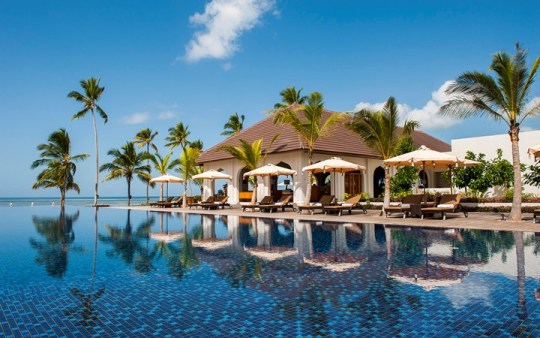
The name Zanzibar immediately conjures up images of an island paradise with soft-sand, white beaches and shimmering azure waters. But, the Zanzibar Archipelago is so much more than romantic coastlines and blissful sunsets - these islands offer a kaleidoscope of sights, smells and tastes which feed your soul and leave you wanting to return again. Zanzibar is without a doubt a tropical dream destination, ideal for getting away from it all, but it is also a fascinating destination from a historical and cultural perspective, as well as being a top adventure and eco-tourism destination.
Here are our top 12 reasons to visit Zanzibar Islands:
1. Blissful beach destination
Zanzibar is the home of idyllic beaches, balmy weather & warm tropical waters. This archipelago is renowned for clear warm waters, coral reefs and rich marine diversity making it a perfect under-water destination for snorkelling and diving. If it is lazy days along white sandy beaches that you are after - Zanzibar is hard to beat. But, in addition to the perfect beach destination, Zanzibar is also full of options for nature lovers, culture vultures, and adventurers.
2. Unique and vibrant culture and architecture
Zanzibar is fairly undeveloped and enjoys semi-autonomy from mainland Tanzania. The colourful history and rich heritage can be seen in the strong Arabic, Indian, African, Persian and European influences and adds a vibrant dimension to the island. Exploring the cobbled alleyways of historic Stone Town’s old quarter, a UNESCO World Heritage Site, you encounter a captivating blend of diverse architectural styles in the mosques and houses interwoven to create this charming destination.
Old mansions and palaces, such as the House of Wonders, the old Turkish Baths, as well as lively bazaars, market stalls, and shops all, overwhelm the senses with their energy and detail; which tell the story of a long and tumultuous history. Zanzibar is predominantly Islamic and this is evident in the lifestyle of the locals and the design of everything from furniture and fabric to jewelry and crafts. Look out for the famous carved teak Zanzibar doors. The Dhow Countries Music Academy is a great place to get a feel for the local music style known as Taarab - which is a blend of classical Swahili poetry, percussion, and rhythm infused with a myriad of influences from the Middle East, Africa, India and the West.
3. Exotic spices
Zanzibar Island is well known as the Spice Island due to the farming and processing of aromatic spices like cloves, turmeric, cinnamon, nutmeg, lemongrass and black pepper. Visit spice plantations to learn about the process and history of these crops, their medicinal and culinary uses. Follow the aromas and sample the delicious blend of flavours in the market street food and traditionally prepared dishes.
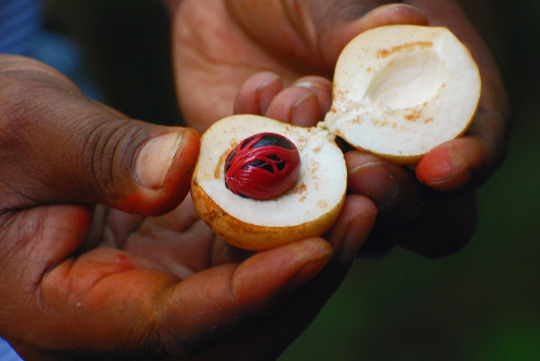
4. Romantic getaway
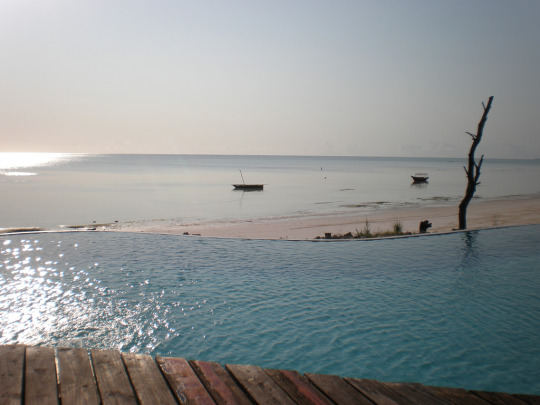
Not just aromatic, but also romantic - it's an ideal place to spice things up. With some of the most beautiful lodges and settings in the world, how can the archipelago not be the perfect place for romance? It's the perfect place to take long walks on the beach, relax beside the water and drink cocktails as the sun sets. Zanzibar is, of course, a popular honeymoon and wedding destination.
5. Breakaway - escape the crowds and do your own thing
For those looking for something even less populated and developed the neighbouring islands of Pemba, Mafia, Chumbe and Mnemba make wonderful destinations where you are likely to have entire stretches of beach all to your self. There are more than 50 smaller islands that make up this archipelago and many beautiful lodges to choose from. Rent a scooter (moped) to explore the narrow streets and beautiful coastline at your own pace, away from the crowds. The roads are rough in places and the traffic can be a bit hair-raising, but it is the perfect way to enjoy the beautiful weather and go on tailor-made adventures to the lesser-known corners of the islands.
6. Diving Mecca and water lover's paradise
Zanzibar has some of the world's most beautiful dive sights and is a well-loved destination for those wanting to explore the underwater world.

Zanzibar has a long list of offerings for the outdoor water enthusiast - from scuba diving and deep-sea fishing to kayaking and sailing on traditional wooden dhows. Swim and snorkel in search of tropical fish amongst the coral, or go windsurfing, kite-boarding water-skiing or island hopping.
7. Rich flora and fauna - Red colobus monkeys in Jozani Forest, butterflies, Kizimkazi dolphins, tortoises and turtles
Another great reason to visit Zanzibar is the Jozani Forest Reserve, home to the endangered Red Colobus Monkeys - one of the rarest primates in Africa. These monkeys are endemic to the island and with conservation efforts, are slowly recovering from the brink of extinction. The mature forests of Jozani form part of the island's only National Park, where you can also see hundreds of different butterflies, numerous birds and a variety of interesting plants and animals.
Zanzibar Butterfly Centre (located 1km from Jozani Forest Park) is an environmental community project that has trained local people from the community to farm butterflies sustainably. The project aims to create income for the locals and conserve the local forest by running one of Africa's biggest butterfly sanctuaries, as well as by exporting butterfly pupae. Visitors can participate in an interactive tour with one of the knowledgeable guides in the lush, netted gardens where hundreds of butterflies, all native species to Zanzibar, fly freely. Kizimkazi on the south coast of Zanzibar Island is a popular location for going in search of dolphins. A short boat ride from the village takes you out into the big blue to hopefully see the schools of bottle-nosed or humpback dolphins often found in the area. Spotting these wild dolphins in the crystal clear waters of Zanzibar is an unforgettable experience. The Miza Miza Caves and the oldest mosque in East Africa can also be found in Kizimkazi and are well worth a visit. At the northern tip of the island, you will find Mnarani Natural Aquarium where Zanzibar's turtle conservation is centred. Created around a natural tidal pool the aquarium not only cares for the injured Hawksbill and Green turtles but also ensures the safety and well-being of hatchlings. It is a community conservation project that focuses on educating locals and fishermen about the advantages of protecting these ocean creatures.

Prison Island, once a prison for errant slaves, is a small island found about 5.6 km off the coast of Stone Town. The island now provides sanctuary for the endangered Aldabra giant tortoise. Listed as highly vulnerable on the IUCN Red List, these giant tortoises are constantly under threat from poachers. This population has grown from the four tortoises originally gifted by the Seychelles government in 1919.
8. Local markets and fresh seafood

The local markets and restaurants also offer a feast of fresh seafood - a treat definitely worth experiencing. There are many ways to enjoy these culinary delights - from fresh fish cooked on open fires on the beach to Lobster Thermidor at one of Zanzibar’s hotels, or spiced and served with traditional flavours and twists. Your taste buds will be awakened and constantly tantalised by the variety.
9. History and traditional Dhows
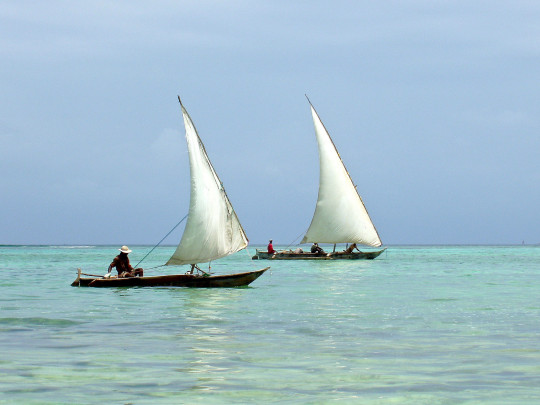
Zanzibar has a long and complex history having been the biggest slave market in East Africa, as well as a base for voyaging traders. It became well-known as the Spice Island for its aromatic spice offerings and was also an important player in the ivory trade. Zanzibar has been diversely influenced by the British, Arabs, Portuguese, Indians, Persians and Africans, all of whom have passed through the island and left their mark. Enjoy a trip on a traditional hand-crafted wooden dhow - a remnant from the trade history of the area and still in use daily for transport and fishing.
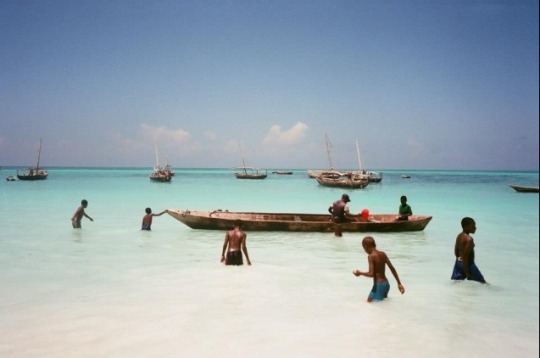
10. Friendly locals and festivals
The people of Zanzibar are known for their friendliness - the locals are generally helpful and welcoming towards visitors. There is an island vibe outside of Stone Town's bustle, a laid-back slow pace to life, and travel is relatively safe. Remember to be respectful of the Muslim norms, by dressing appropriately and not drinking alcohol in public places.
Zanzibar has a few interesting festivals– Sauti za Busara (an African music festival takes place annually in February), Jahazi (Jazz and Literary festival usually in September) and Mwaka Kogwa (a four-day festival held in July to mark Nairuzim - the Shirazi New Year). People from across the African continent participate in these gatherings seeing a cross-section of cultures, ages and backgrounds celebrating together. The Zanzibar International Film Festival (ZIFF) is the largest cultural event that takes place in June and July. The festival showcases cinema, music and performing arts from a diverse range of races, classes and religions, drawing a large audience.
11. Budget-friendly and easy to explore
Zanzibar has something for everyone - from exclusive five-star experiences to family-friendly affordability. Suit yourself and your budget - whether it is ultimate luxury that you are after or a laid back beach shack - Zanzibar offers something for every taste and heart's desire.
Getting around in Zanzibar is simple and easy to do on your own, giving you the freedom to explore at leisure.
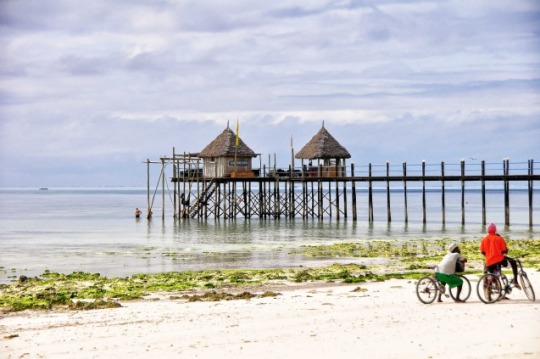
12. The perfect add-on to wildlife safaris in East Africa

The magic of Zanzibar is that it is a multi-faceted destination, offering a unique blend of idyllic beaches, intriguing history, cultural diversity, tasty cuisine, exotic spices, and rich flora and fauna.
Zanzibar is easily accessible from Dar es Salaam by boat or by air and is a perfect add-on to African safaris in East Africa, giving you the best of both worlds. To browse the multitude of tour options for Zanzibar, view our upcoming Dar es Salaam departures or upcoming tour departures from Nairobi in Kenya.
RELATED POSTS
Easter Holiday offers for you
Top Self Drive Holiday Deals in Kenya
If you think you have to travel far to enjoy a nice weekend, you may never get away. Besides, you can enjoy a beautiful weekend right here in Kenya. There are countless wallet-friendly Kenyan self drive getaways that won’t even break your budget. Don’t spend your weekend, doing absolutely nothing at home. Whether you are looking for romantic destinations, pristine beaches, and adventurous outdoor activities, there are plenty wallet-friendly getaways that will satisfy your weekend desires.
Malindi & Watamu Self Drive Deals
Mombasa South Coast Self Drive Deals
Mombasa North Coast Self Drive Deals
Masai Mara Self Drive Holiday Packages
Lukenya & Machakos Self Drive
Meru Holiday Self Drive Deals
Mt. Kenya & Aberdare Self Drive Holiday Deals
Nyeri Holiday Self Drive Deals
Samburu Holiday Self Drive Deals
Top Outdoor Activities in Kenya
Outdoor activities in Kenya are a great way to experience Kenya, Choosing where to start in Kenya can be overwhelming. The country has many different outdoor activities, ranging from adrenaline-pumping adventures to more meditative outings.
Kenya is always a fantastic destination for family bonding. Spending time with the family on weekend is a great opportunity to re-connect and communicate while having fun.
Outdoor activities are perfect for those who want to experience a relaxing and refreshing weekend in an amazing place. Do something fun this weekend and spend worthy time with your family.
For great weekend bonding, we present to you 6 fun outdoor activities for the family. These outdoor activities are great adventures for you and your family.
Hike To Ol Donyo Sabuk & 14 Falls, Thika
Chaka Ranch Day Trip – QuadBikes, PaintBalling
Ngare Ndare Day Trip Hike (Nanyuki)
Kereita Zip Lining & Hiking Day Trip
Top Madaraka Express SGR Holiday Deals
2 Nights Malindi & Watamu holiday with SGR
2 Nights Amboseli Holiday With SGR
2 Nights Tsavo Holiday With SGR Sa
2 Nights Voi Holiday With SGR
2 Nights Mombasa North Coast With SGR
2 Nights Mombasa South Coast With SGR
Read the full article
0 notes
Text
Sydney Life
You dont need a pocket full of pennies to enjoy all that Sydney has to offer. Weve asked some fellow Sydney-based travel bloggers about their favourite things to do in Sydney that wont cost you a thing. Check them out below!

Bradleys Head, Sydney
Managing a website about hiking, its no surprise that my favorite free thing to do in Sydney is discovering new walking tracks.
Hiking in Sydney is the best way to fully appreciate everything this beautiful city has to offer. Sydney has a very diverse landscape, so you can walk the beaches, the bush, the mountains and of course the magnificent Sydney Harbour.Whats great about Sydney Harbour is that it is home to countless walking tracks that take you past secluded beaches, beautiful parks, picturesque bays, old lighthouses and much more. And you can discover all these exciting places with the city literally only a stones throw away.
Some parts of the Harbour also hold lots of relics from Sydneys military history. At Bradleys Head for example you can find a fortification complex that was built in the 19th century to protect New South Wales against invaders. And Goat Island, right in the middle of the Harbour, once served as a massive gunpowder store.
So go ahead, dust off those hiking shoes and head outdoors to discover the goodness that Sydney has to offer, for free!
Families visiting Sydney can find all sorts of economical activities. For younger kids visits to some of Sydneys truly amazing playgrounds are a must. Visit a playground by a beach and you have a great free fresh air day out. Great playground and beach combos can be found at Bondi, Bronte, Watsons Bay, Clifton Gardens, Balmoral, Collaroy and Mona Vale.
Families with older children might enjoy snorkelling, free if you bring your own kit. Try Shelly Beach at Manly for vibrant sea life, rays, wobbegongs and even (harmless) juvenile dusky whaler sharks.
Ocean swimming is another super healthy Sydney sport you can enjoy for free. Explore the many rock pools on the ocean beaches. Check out the Bold and Beautiful Swim Squad if you are a confident sea swimmer. Dozens of swimmers enjoy their daily dip at 7am each morning. Meet at Manly SLSC and ask for a free pink cap.
One of our favourite free things to do in Sydney is the Bondi to Bronte walk. This iconic cliff-top walk is 2.5km long and joins two of Sydneys most famous beaches. The views of the ocean and the coastal cliffs along the walk are stunning, making this a real Sydney must see.
The walk takes us around 2 hours with two young kids in tow. Adults doing the walk without kids could easily do it in one and a half hours. There is also the option to continue the walk all the way to Coogee Beach, which is a further 3 kilometers. The walk is also a popular jogging route, and has a few workout stations dotted along the path.
When doing the walk with kids, we usually stop off at Tamarama Beach or Park on the way for a rest and a snack, and end the walk by playing on the beach in Bronte. Bronte has a lovely park with a playground and plenty of nearby cafes, making it ideal for families.The Bondi to Bronte walk is absolutely stunning and one of the most popular places in Sydney for taking photos, so dont leave your camera behind!
Sarah Shrapnel Love Swah
If youre a culture vulture in the mood for some creative inspiration without breaking the bank, then Sydney is the place for you! This notoriously extensive city is home to a huge selection of budget-friendly art galleries showcasing artworks from emerging and prominent artists, many of which you can visit free of charge.
Firstly head on down to the Museum of Contemporary Art to enjoy their impressive permanent collection. Not only does it feature an array of world class modern art from around the globe, this collection is also free! Another permanent collection worth checking out is at the Art Gallery of NSW which is filled with an eclectic range of Australian, Asian, Western and Pacific art works.
A local favourite on the smaller end of the spectrum is White Rabbit Gallery situated in Chippendale, which houses one of the largest collection of modern Chinese art in the world.

King Street, Newtown
Exploring Street Art in Sydneys Inner West I love exploring the thriving street art culture in the inner Sydney suburb of Newtown. World class murals adorn walls on almost every corner here thanks in part to a local government initiatives aimed at reducing tagging by matching property owners with street artists.
Newtown has always been colourful community, but the volume of work by local and international artists here makes it a perfect place for any street art lover to explore. Add to that some great small bars, cafes and several local craft breweries and you have plenty of great rest stops too.
Check out Lennox Street Newtown if youre after a high reward to effort ratio with half a dozen full-scale murals in just 2 blocks. Alternatively make an afternoon of it, take the train to St Peters station and snake your way through the back lanes to a nondescript warehouse in the backstreets that is home to local brewery Young Henrys. This is the perfect spot to taste some really inspired local brews and reward yourself for all that walking! Sydneys own street art nirvana is only 10 minutes by train from the CBD.
Tip Along the way pick up a lamington from Flower Drum on King Street or a great meat pie from Black Star Pastry, in Australia Street, Newtown!
Nothing beats snorkelling in one of Sydneys stunning beaches on a scorching summer day. All you need is a snorkel and mask, and its easy to learn, even if youre new to the sport. Snorkelling is the best way to discover a new side of Sydney, and come face to face with incredible marine life, including rays, blue gropers, wobbegongs, seahorses, and a wide variety of colourful fish, kelp, and rocky reefs. Dont forget your GoPro!
In the Eastern Suburbs, Gordons Bay (complete with underwater nature trail!), and Clovelly Beach are perfect places to get started. Clovelly offers easy beach access in a sheltered bay, making it the perfect spot for first-timers. Clovelly is also famous for its resident blue gropers, so keep your eyes peeled for these friendly fish.
On Sydneys north, Shelly Beach, near Manly, is part of the Cabbage Tree Bay Aquatic Reserve, and offers pristine blue waters teeming with marine life. Its also popular with divers.Wherever you end up, youre sure to have a fantastic time- snorkelling is one of the best free things to try in Sydney. Bring a friend, some sunscreen, and dive in!
Tucked away in one of the myriad bays and inlets on the northside of Sydney Harbour is my favourite Sydney walk. Only a few kilometres long, you can stroll the entire path in less than an hour. The path follows the harbour shoreline beginning at Cremorne Point wharf and ending at Mosman Bay wharf, making it easy to get to by inner harbour ferry.
Before you set out take a short detour through Cremorne Point Reserve for spectacular views across Sydney Harbour, or better yet, bring a picnic and enjoy the sunshine. Dont miss Robertson Point Lighthouse, still a working lighthouse guiding boats safely past the point. You cant go inside but you can get quite close. Heading north from the reserve, the path winds past some of Sydneys most exclusive Federation mansions and million dollar water views.
At Mosman Bay wharf either catch a ferry back to the city or retrace your steps as far as Hodgson Ave. Follow the street to join up with a parallel path on the east side of Cremorne Point for the best views of theSydneyOpera House and Sydney Harbour Bridge has to offer.
Living in Sydney we are spoilt for choice when it comes to scenic natural attractions. One of my favourite free things to do in Sydney is walking the different parts of the The Coast Track in Royal National Park. The entire track is 26km-long and takes two days to complete but it doesnt have to be done all at once. You can easily do parts of the track as spectacular day hikes.
The northern part of the track takes you from the village of Bundeena to Marley beach along one of the most beautiful stretches of Illawarra coastline. On top of the dramatic scenery, this walk also gives you the perfect chance to spot Humpback whales during their migration between April and December.The southern part of the coastal track takes you from Otford train station to Burning Palms beach via the Palm Jungle loop trail. This track has the best of all worlds: towering cliffs of the rugged coastline, eucalypt forest, rainforest gullies, beaches, grasslands and even a palm jungle!
Attending a conference I discovered this self-made walking trail from North Sydney. Its a great way to watch the city wake and spring to life.Starting on Blues Point Road and passing the eclectic mixture clothing shops, restaurants and bars, walk to Henry Lawson Avenue.Wander alongside Blues Bay to the iconic Sails Restaurant at Lavender Bay. Stop and take in the views of the Harbour, The Bridge, Circular Quay and Opera House.
Next, follow the laneway from Sails to E Cres Street veering right onto Bay View Street. Youll walk passed beautiful homes with Bay views. Continually hugging Lavender Bay, walk round to the left into King George Street taking the laneway to the right soon after.Stroll down the lane until Wendy Whiteleys Secret Garden. This marks the beginning of Peter Kingston Walkway. This will take you pass Luna Park and North Sydney Pool.Follow the signs up onto the Harbour Bridge. Explore the Rocks area at the end and walk through to the Quay and Opera House.If you do this walk early in the morning, when the sun is just rising over the harbour, you can enjoy your own private Rocky moment up the Opera House stairs!
For more fun and free activities in Sydney, click here!
]]>
http://www.sydney.com/sydney-life/feed
0 notes
Text
Sydney Life
You dont need a pocket full of pennies to enjoy all that Sydney has to offer. Weve asked some fellow Sydney-based travel bloggers about their favourite things to do in Sydney that wont cost you a thing. Check them out below!
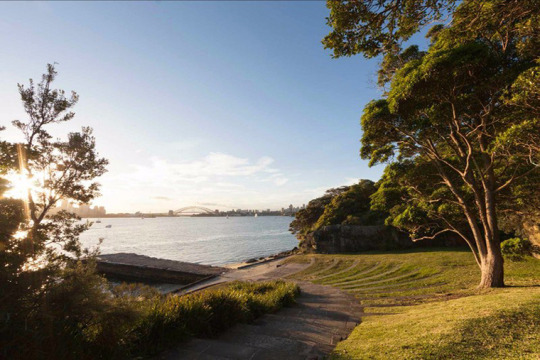
Bradleys Head, Sydney
Managing a website about hiking, its no surprise that my favorite free thing to do in Sydney is discovering new walking tracks.
Hiking in Sydney is the best way to fully appreciate everything this beautiful city has to offer. Sydney has a very diverse landscape, so you can walk the beaches, the bush, the mountains and of course the magnificent Sydney Harbour.Whats great about Sydney Harbour is that it is home to countless walking tracks that take you past secluded beaches, beautiful parks, picturesque bays, old lighthouses and much more. And you can discover all these exciting places with the city literally only a stones throw away.
Some parts of the Harbour also hold lots of relics from Sydneys military history. At Bradleys Head for example you can find a fortification complex that was built in the 19th century to protect New South Wales against invaders. And Goat Island, right in the middle of the Harbour, once served as a massive gunpowder store.
So go ahead, dust off those hiking shoes and head outdoors to discover the goodness that Sydney has to offer, for free!
Families visiting Sydney can find all sorts of economical activities. For younger kids visits to some of Sydneys truly amazing playgrounds are a must. Visit a playground by a beach and you have a great free fresh air day out. Great playground and beach combos can be found at Bondi, Bronte, Watsons Bay, Clifton Gardens, Balmoral, Collaroy and Mona Vale.
Families with older children might enjoy snorkelling, free if you bring your own kit. Try Shelly Beach at Manly for vibrant sea life, rays, wobbegongs and even (harmless) juvenile dusky whaler sharks.
Ocean swimming is another super healthy Sydney sport you can enjoy for free. Explore the many rock pools on the ocean beaches. Check out the Bold and Beautiful Swim Squad if you are a confident sea swimmer. Dozens of swimmers enjoy their daily dip at 7am each morning. Meet at Manly SLSC and ask for a free pink cap.
One of our favourite free things to do in Sydney is the Bondi to Bronte walk. This iconic cliff-top walk is 2.5km long and joins two of Sydneys most famous beaches. The views of the ocean and the coastal cliffs along the walk are stunning, making this a real Sydney must see.
The walk takes us around 2 hours with two young kids in tow. Adults doing the walk without kids could easily do it in one and a half hours. There is also the option to continue the walk all the way to Coogee Beach, which is a further 3 kilometers. The walk is also a popular jogging route, and has a few workout stations dotted along the path.
When doing the walk with kids, we usually stop off at Tamarama Beach or Park on the way for a rest and a snack, and end the walk by playing on the beach in Bronte. Bronte has a lovely park with a playground and plenty of nearby cafes, making it ideal for families.The Bondi to Bronte walk is absolutely stunning and one of the most popular places in Sydney for taking photos, so dont leave your camera behind!
Sarah Shrapnel Love Swah
If youre a culture vulture in the mood for some creative inspiration without breaking the bank, then Sydney is the place for you! This notoriously extensive city is home to a huge selection of budget-friendly art galleries showcasing artworks from emerging and prominent artists, many of which you can visit free of charge.
Firstly head on down to the Museum of Contemporary Art to enjoy their impressive permanent collection. Not only does it feature an array of world class modern art from around the globe, this collection is also free! Another permanent collection worth checking out is at the Art Gallery of NSW which is filled with an eclectic range of Australian, Asian, Western and Pacific art works.
A local favourite on the smaller end of the spectrum is White Rabbit Gallery situated in Chippendale, which houses one of the largest collection of modern Chinese art in the world.

King Street, Newtown
Exploring Street Art in Sydneys Inner West I love exploring the thriving street art culture in the inner Sydney suburb of Newtown. World class murals adorn walls on almost every corner here thanks in part to a local government initiatives aimed at reducing tagging by matching property owners with street artists.
Newtown has always been colourful community, but the volume of work by local and international artists here makes it a perfect place for any street art lover to explore. Add to that some great small bars, cafes and several local craft breweries and you have plenty of great rest stops too.
Check out Lennox Street Newtown if youre after a high reward to effort ratio with half a dozen full-scale murals in just 2 blocks. Alternatively make an afternoon of it, take the train to St Peters station and snake your way through the back lanes to a nondescript warehouse in the backstreets that is home to local brewery Young Henrys. This is the perfect spot to taste some really inspired local brews and reward yourself for all that walking! Sydneys own street art nirvana is only 10 minutes by train from the CBD.
Tip Along the way pick up a lamington from Flower Drum on King Street or a great meat pie from Black Star Pastry, in Australia Street, Newtown!
Nothing beats snorkelling in one of Sydneys stunning beaches on a scorching summer day. All you need is a snorkel and mask, and its easy to learn, even if youre new to the sport. Snorkelling is the best way to discover a new side of Sydney, and come face to face with incredible marine life, including rays, blue gropers, wobbegongs, seahorses, and a wide variety of colourful fish, kelp, and rocky reefs. Dont forget your GoPro!
In the Eastern Suburbs, Gordons Bay (complete with underwater nature trail!), and Clovelly Beach are perfect places to get started. Clovelly offers easy beach access in a sheltered bay, making it the perfect spot for first-timers. Clovelly is also famous for its resident blue gropers, so keep your eyes peeled for these friendly fish.
On Sydneys north, Shelly Beach, near Manly, is part of the Cabbage Tree Bay Aquatic Reserve, and offers pristine blue waters teeming with marine life. Its also popular with divers.Wherever you end up, youre sure to have a fantastic time- snorkelling is one of the best free things to try in Sydney. Bring a friend, some sunscreen, and dive in!
Tucked away in one of the myriad bays and inlets on the northside of Sydney Harbour is my favourite Sydney walk. Only a few kilometres long, you can stroll the entire path in less than an hour. The path follows the harbour shoreline beginning at Cremorne Point wharf and ending at Mosman Bay wharf, making it easy to get to by inner harbour ferry.
Before you set out take a short detour through Cremorne Point Reserve for spectacular views across Sydney Harbour, or better yet, bring a picnic and enjoy the sunshine. Dont miss Robertson Point Lighthouse, still a working lighthouse guiding boats safely past the point. You cant go inside but you can get quite close. Heading north from the reserve, the path winds past some of Sydneys most exclusive Federation mansions and million dollar water views.
At Mosman Bay wharf either catch a ferry back to the city or retrace your steps as far as Hodgson Ave. Follow the street to join up with a parallel path on the east side of Cremorne Point for the best views of theSydneyOpera House and Sydney Harbour Bridge has to offer.
Living in Sydney we are spoilt for choice when it comes to scenic natural attractions. One of my favourite free things to do in Sydney is walking the different parts of the The Coast Track in Royal National Park. The entire track is 26km-long and takes two days to complete but it doesnt have to be done all at once. You can easily do parts of the track as spectacular day hikes.
The northern part of the track takes you from the village of Bundeena to Marley beach along one of the most beautiful stretches of Illawarra coastline. On top of the dramatic scenery, this walk also gives you the perfect chance to spot Humpback whales during their migration between April and December.The southern part of the coastal track takes you from Otford train station to Burning Palms beach via the Palm Jungle loop trail. This track has the best of all worlds: towering cliffs of the rugged coastline, eucalypt forest, rainforest gullies, beaches, grasslands and even a palm jungle!
Attending a conference I discovered this self-made walking trail from North Sydney. Its a great way to watch the city wake and spring to life.Starting on Blues Point Road and passing the eclectic mixture clothing shops, restaurants and bars, walk to Henry Lawson Avenue.Wander alongside Blues Bay to the iconic Sails Restaurant at Lavender Bay. Stop and take in the views of the Harbour, The Bridge, Circular Quay and Opera House.
Next, follow the laneway from Sails to E Cres Street veering right onto Bay View Street. Youll walk passed beautiful homes with Bay views. Continually hugging Lavender Bay, walk round to the left into King George Street taking the laneway to the right soon after.Stroll down the lane until Wendy Whiteleys Secret Garden. This marks the beginning of Peter Kingston Walkway. This will take you pass Luna Park and North Sydney Pool.Follow the signs up onto the Harbour Bridge. Explore the Rocks area at the end and walk through to the Quay and Opera House.If you do this walk early in the morning, when the sun is just rising over the harbour, you can enjoy your own private Rocky moment up the Opera House stairs!
For more fun and free activities in Sydney, click here!
]]>
http://www.sydney.com/sydney-life/feed
0 notes
Text
Sydney Life
You dont need a pocket full of pennies to enjoy all that Sydney has to offer. Weve asked some fellow Sydney-based travel bloggers about their favourite things to do in Sydney that wont cost you a thing. Check them out below!

Bradleys Head, Sydney
Managing a website about hiking, its no surprise that my favorite free thing to do in Sydney is discovering new walking tracks.
Hiking in Sydney is the best way to fully appreciate everything this beautiful city has to offer. Sydney has a very diverse landscape, so you can walk the beaches, the bush, the mountains and of course the magnificent Sydney Harbour.Whats great about Sydney Harbour is that it is home to countless walking tracks that take you past secluded beaches, beautiful parks, picturesque bays, old lighthouses and much more. And you can discover all these exciting places with the city literally only a stones throw away.
Some parts of the Harbour also hold lots of relics from Sydneys military history. At Bradleys Head for example you can find a fortification complex that was built in the 19th century to protect New South Wales against invaders. And Goat Island, right in the middle of the Harbour, once served as a massive gunpowder store.
So go ahead, dust off those hiking shoes and head outdoors to discover the goodness that Sydney has to offer, for free!
Families visiting Sydney can find all sorts of economical activities. For younger kids visits to some of Sydneys truly amazing playgrounds are a must. Visit a playground by a beach and you have a great free fresh air day out. Great playground and beach combos can be found at Bondi, Bronte, Watsons Bay, Clifton Gardens, Balmoral, Collaroy and Mona Vale.
Families with older children might enjoy snorkelling, free if you bring your own kit. Try Shelly Beach at Manly for vibrant sea life, rays, wobbegongs and even (harmless) juvenile dusky whaler sharks.
Ocean swimming is another super healthy Sydney sport you can enjoy for free. Explore the many rock pools on the ocean beaches. Check out the Bold and Beautiful Swim Squad if you are a confident sea swimmer. Dozens of swimmers enjoy their daily dip at 7am each morning. Meet at Manly SLSC and ask for a free pink cap.
One of our favourite free things to do in Sydney is the Bondi to Bronte walk. This iconic cliff-top walk is 2.5km long and joins two of Sydneys most famous beaches. The views of the ocean and the coastal cliffs along the walk are stunning, making this a real Sydney must see.
The walk takes us around 2 hours with two young kids in tow. Adults doing the walk without kids could easily do it in one and a half hours. There is also the option to continue the walk all the way to Coogee Beach, which is a further 3 kilometers. The walk is also a popular jogging route, and has a few workout stations dotted along the path.
When doing the walk with kids, we usually stop off at Tamarama Beach or Park on the way for a rest and a snack, and end the walk by playing on the beach in Bronte. Bronte has a lovely park with a playground and plenty of nearby cafes, making it ideal for families.The Bondi to Bronte walk is absolutely stunning and one of the most popular places in Sydney for taking photos, so dont leave your camera behind!
Sarah Shrapnel Love Swah
If youre a culture vulture in the mood for some creative inspiration without breaking the bank, then Sydney is the place for you! This notoriously extensive city is home to a huge selection of budget-friendly art galleries showcasing artworks from emerging and prominent artists, many of which you can visit free of charge.
Firstly head on down to the Museum of Contemporary Art to enjoy their impressive permanent collection. Not only does it feature an array of world class modern art from around the globe, this collection is also free! Another permanent collection worth checking out is at the Art Gallery of NSW which is filled with an eclectic range of Australian, Asian, Western and Pacific art works.
A local favourite on the smaller end of the spectrum is White Rabbit Gallery situated in Chippendale, which houses one of the largest collection of modern Chinese art in the world.
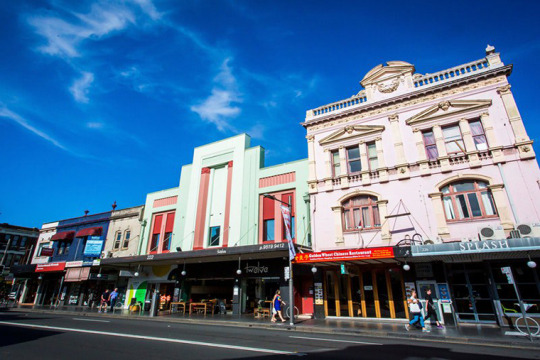
King Street, Newtown
Exploring Street Art in Sydneys Inner West I love exploring the thriving street art culture in the inner Sydney suburb of Newtown. World class murals adorn walls on almost every corner here thanks in part to a local government initiatives aimed at reducing tagging by matching property owners with street artists.
Newtown has always been colourful community, but the volume of work by local and international artists here makes it a perfect place for any street art lover to explore. Add to that some great small bars, cafes and several local craft breweries and you have plenty of great rest stops too.
Check out Lennox Street Newtown if youre after a high reward to effort ratio with half a dozen full-scale murals in just 2 blocks. Alternatively make an afternoon of it, take the train to St Peters station and snake your way through the back lanes to a nondescript warehouse in the backstreets that is home to local brewery Young Henrys. This is the perfect spot to taste some really inspired local brews and reward yourself for all that walking! Sydneys own street art nirvana is only 10 minutes by train from the CBD.
Tip Along the way pick up a lamington from Flower Drum on King Street or a great meat pie from Black Star Pastry, in Australia Street, Newtown!
Nothing beats snorkelling in one of Sydneys stunning beaches on a scorching summer day. All you need is a snorkel and mask, and its easy to learn, even if youre new to the sport. Snorkelling is the best way to discover a new side of Sydney, and come face to face with incredible marine life, including rays, blue gropers, wobbegongs, seahorses, and a wide variety of colourful fish, kelp, and rocky reefs. Dont forget your GoPro!
In the Eastern Suburbs, Gordons Bay (complete with underwater nature trail!), and Clovelly Beach are perfect places to get started. Clovelly offers easy beach access in a sheltered bay, making it the perfect spot for first-timers. Clovelly is also famous for its resident blue gropers, so keep your eyes peeled for these friendly fish.
On Sydneys north, Shelly Beach, near Manly, is part of the Cabbage Tree Bay Aquatic Reserve, and offers pristine blue waters teeming with marine life. Its also popular with divers.Wherever you end up, youre sure to have a fantastic time- snorkelling is one of the best free things to try in Sydney. Bring a friend, some sunscreen, and dive in!
Tucked away in one of the myriad bays and inlets on the northside of Sydney Harbour is my favourite Sydney walk. Only a few kilometres long, you can stroll the entire path in less than an hour. The path follows the harbour shoreline beginning at Cremorne Point wharf and ending at Mosman Bay wharf, making it easy to get to by inner harbour ferry.
Before you set out take a short detour through Cremorne Point Reserve for spectacular views across Sydney Harbour, or better yet, bring a picnic and enjoy the sunshine. Dont miss Robertson Point Lighthouse, still a working lighthouse guiding boats safely past the point. You cant go inside but you can get quite close. Heading north from the reserve, the path winds past some of Sydneys most exclusive Federation mansions and million dollar water views.
At Mosman Bay wharf either catch a ferry back to the city or retrace your steps as far as Hodgson Ave. Follow the street to join up with a parallel path on the east side of Cremorne Point for the best views of theSydneyOpera House and Sydney Harbour Bridge has to offer.
Living in Sydney we are spoilt for choice when it comes to scenic natural attractions. One of my favourite free things to do in Sydney is walking the different parts of the The Coast Track in Royal National Park. The entire track is 26km-long and takes two days to complete but it doesnt have to be done all at once. You can easily do parts of the track as spectacular day hikes.
The northern part of the track takes you from the village of Bundeena to Marley beach along one of the most beautiful stretches of Illawarra coastline. On top of the dramatic scenery, this walk also gives you the perfect chance to spot Humpback whales during their migration between April and December.The southern part of the coastal track takes you from Otford train station to Burning Palms beach via the Palm Jungle loop trail. This track has the best of all worlds: towering cliffs of the rugged coastline, eucalypt forest, rainforest gullies, beaches, grasslands and even a palm jungle!
Attending a conference I discovered this self-made walking trail from North Sydney. Its a great way to watch the city wake and spring to life.Starting on Blues Point Road and passing the eclectic mixture clothing shops, restaurants and bars, walk to Henry Lawson Avenue.Wander alongside Blues Bay to the iconic Sails Restaurant at Lavender Bay. Stop and take in the views of the Harbour, The Bridge, Circular Quay and Opera House.
Next, follow the laneway from Sails to E Cres Street veering right onto Bay View Street. Youll walk passed beautiful homes with Bay views. Continually hugging Lavender Bay, walk round to the left into King George Street taking the laneway to the right soon after.Stroll down the lane until Wendy Whiteleys Secret Garden. This marks the beginning of Peter Kingston Walkway. This will take you pass Luna Park and North Sydney Pool.Follow the signs up onto the Harbour Bridge. Explore the Rocks area at the end and walk through to the Quay and Opera House.If you do this walk early in the morning, when the sun is just rising over the harbour, you can enjoy your own private Rocky moment up the Opera House stairs!
For more fun and free activities in Sydney, click here!
]]>
http://www.sydney.com/sydney-life/feed
0 notes
Text
12 Reasons to visit Zanzibar

The name Zanzibar immediately conjures up images of an island paradise with soft-sand, white beaches and shimmering azure waters. But, the Zanzibar Archipelago is so much more than romantic coastlines and blissful sunsets - these islands offer a kaleidoscope of sights, smells and tastes which feed your soul and leave you wanting to return again. Zanzibar is without a doubt a tropical dream destination, ideal for getting away from it all, but it is also a fascinating destination from a historical and cultural perspective, as well as being a top adventure and eco-tourism destination.
Here are our top 12 reasons to visit Zanzibar Islands:
1. Blissful beach destination
Zanzibar is the home of idyllic beaches, balmy weather & warm tropical waters. This archipelago is renowned for clear warm waters, coral reefs and rich marine diversity making it a perfect under-water destination for snorkelling and diving. If it is lazy days along white sandy beaches that you are after - Zanzibar is hard to beat. But, in addition to the perfect beach destination, Zanzibar is also full of options for nature lovers, culture vultures, and adventurers.
2. Unique and vibrant culture and architecture
Zanzibar is fairly undeveloped and enjoys semi-autonomy from mainland Tanzania. The colourful history and rich heritage can be seen in the strong Arabic, Indian, African, Persian and European influences and adds a vibrant dimension to the island. Exploring the cobbled alleyways of historic Stone Town’s old quarter, a UNESCO World Heritage Site, you encounter a captivating blend of diverse architectural styles in the mosques and houses interwoven to create this charming destination.
Old mansions and palaces, such as the House of Wonders, the old Turkish Baths, as well as lively bazaars, market stalls, and shops all, overwhelm the senses with their energy and detail; which tell the story of a long and tumultuous history. Zanzibar is predominantly Islamic and this is evident in the lifestyle of the locals and the design of everything from furniture and fabric to jewelry and crafts. Look out for the famous carved teak Zanzibar doors. The Dhow Countries Music Academy is a great place to get a feel for the local music style known as Taarab - which is a blend of classical Swahili poetry, percussion, and rhythm infused with a myriad of influences from the Middle East, Africa, India and the West.
3. Exotic spices
Zanzibar Island is well known as the Spice Island due to the farming and processing of aromatic spices like cloves, turmeric, cinnamon, nutmeg, lemongrass and black pepper. Visit spice plantations to learn about the process and history of these crops, their medicinal and culinary uses. Follow the aromas and sample the delicious blend of flavours in the market street food and traditionally prepared dishes.
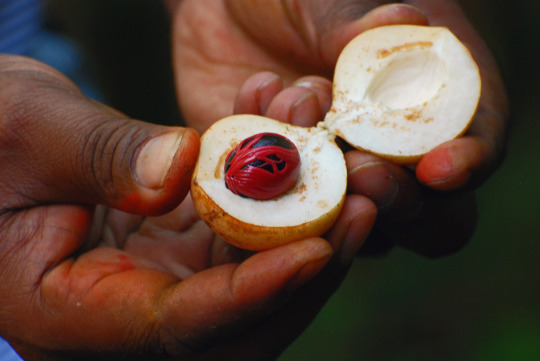
4. Romantic getaway

Not just aromatic, but also romantic - it's an ideal place to spice things up. With some of the most beautiful lodges and settings in the world, how can the archipelago not be the perfect place for romance? It's the perfect place to take long walks on the beach, relax beside the water and drink cocktails as the sun sets. Zanzibar is, of course, a popular honeymoon and wedding destination.
5. Breakaway - escape the crowds and do your own thing
For those looking for something even less populated and developed the neighbouring islands of Pemba, Mafia, Chumbe and Mnemba make wonderful destinations where you are likely to have entire stretches of beach all to your self. There are more than 50 smaller islands that make up this archipelago and many beautiful lodges to choose from. Rent a scooter (moped) to explore the narrow streets and beautiful coastline at your own pace, away from the crowds. The roads are rough in places and the traffic can be a bit hair-raising, but it is the perfect way to enjoy the beautiful weather and go on tailor-made adventures to the lesser-known corners of the islands.
6. Diving Mecca and water lover's paradise
Zanzibar has some of the world's most beautiful dive sights and is a well-loved destination for those wanting to explore the underwater world.
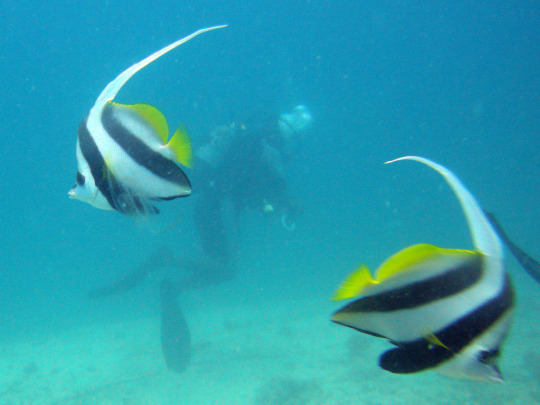
Zanzibar has a long list of offerings for the outdoor water enthusiast - from scuba diving and deep-sea fishing to kayaking and sailing on traditional wooden dhows. Swim and snorkel in search of tropical fish amongst the coral, or go windsurfing, kite-boarding water-skiing or island hopping.
7. Rich flora and fauna - Red colobus monkeys in Jozani Forest, butterflies, Kizimkazi dolphins, tortoises and turtles
Another great reason to visit Zanzibar is the Jozani Forest Reserve, home to the endangered Red Colobus Monkeys - one of the rarest primates in Africa. These monkeys are endemic to the island and with conservation efforts, are slowly recovering from the brink of extinction. The mature forests of Jozani form part of the island's only National Park, where you can also see hundreds of different butterflies, numerous birds and a variety of interesting plants and animals.
Zanzibar Butterfly Centre (located 1km from Jozani Forest Park) is an environmental community project that has trained local people from the community to farm butterflies sustainably. The project aims to create income for the locals and conserve the local forest by running one of Africa's biggest butterfly sanctuaries, as well as by exporting butterfly pupae. Visitors can participate in an interactive tour with one of the knowledgeable guides in the lush, netted gardens where hundreds of butterflies, all native species to Zanzibar, fly freely. Kizimkazi on the south coast of Zanzibar Island is a popular location for going in search of dolphins. A short boat ride from the village takes you out into the big blue to hopefully see the schools of bottle-nosed or humpback dolphins often found in the area. Spotting these wild dolphins in the crystal clear waters of Zanzibar is an unforgettable experience. The Miza Miza Caves and the oldest mosque in East Africa can also be found in Kizimkazi and are well worth a visit. At the northern tip of the island, you will find Mnarani Natural Aquarium where Zanzibar's turtle conservation is centred. Created around a natural tidal pool the aquarium not only cares for the injured Hawksbill and Green turtles but also ensures the safety and well-being of hatchlings. It is a community conservation project that focuses on educating locals and fishermen about the advantages of protecting these ocean creatures.

Prison Island, once a prison for errant slaves, is a small island found about 5.6 km off the coast of Stone Town. The island now provides sanctuary for the endangered Aldabra giant tortoise. Listed as highly vulnerable on the IUCN Red List, these giant tortoises are constantly under threat from poachers. This population has grown from the four tortoises originally gifted by the Seychelles government in 1919.
8. Local markets and fresh seafood

The local markets and restaurants also offer a feast of fresh seafood - a treat definitely worth experiencing. There are many ways to enjoy these culinary delights - from fresh fish cooked on open fires on the beach to Lobster Thermidor at one of Zanzibar’s hotels, or spiced and served with traditional flavours and twists. Your taste buds will be awakened and constantly tantalised by the variety.
9. History and traditional Dhows

Zanzibar has a long and complex history having been the biggest slave market in East Africa, as well as a base for voyaging traders. It became well-known as the Spice Island for its aromatic spice offerings and was also an important player in the ivory trade. Zanzibar has been diversely influenced by the British, Arabs, Portuguese, Indians, Persians and Africans, all of whom have passed through the island and left their mark. Enjoy a trip on a traditional hand-crafted wooden dhow - a remnant from the trade history of the area and still in use daily for transport and fishing.
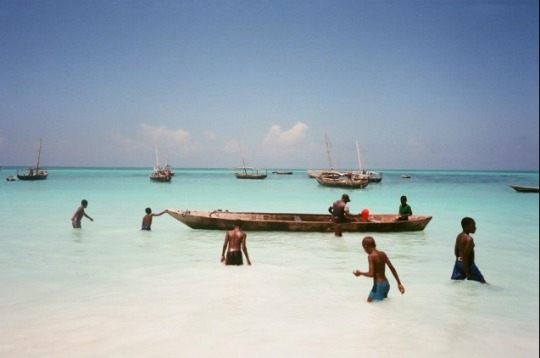
10. Friendly locals and festivals
The people of Zanzibar are known for their friendliness - the locals are generally helpful and welcoming towards visitors. There is an island vibe outside of Stone Town's bustle, a laid-back slow pace to life, and travel is relatively safe. Remember to be respectful of the Muslim norms, by dressing appropriately and not drinking alcohol in public places.
Zanzibar has a few interesting festivals– Sauti za Busara (an African music festival takes place annually in February), Jahazi (Jazz and Literary festival usually in September) and Mwaka Kogwa (a four-day festival held in July to mark Nairuzim - the Shirazi New Year). People from across the African continent participate in these gatherings seeing a cross-section of cultures, ages and backgrounds celebrating together. The Zanzibar International Film Festival (ZIFF) is the largest cultural event that takes place in June and July. The festival showcases cinema, music and performing arts from a diverse range of races, classes and religions, drawing a large audience.
11. Budget-friendly and easy to explore
Zanzibar has something for everyone - from exclusive five-star experiences to family-friendly affordability. Suit yourself and your budget - whether it is ultimate luxury that you are after or a laid back beach shack - Zanzibar offers something for every taste and heart's desire.
Getting around in Zanzibar is simple and easy to do on your own, giving you the freedom to explore at leisure.

12. The perfect add-on to wildlife safaris in East Africa

The magic of Zanzibar is that it is a multi-faceted destination, offering a unique blend of idyllic beaches, intriguing history, cultural diversity, tasty cuisine, exotic spices, and rich flora and fauna.
Zanzibar is easily accessible from Dar es Salaam by boat or by air and is a perfect add-on to African safaris in East Africa, giving you the best of both worlds. To browse the multitude of tour options for Zanzibar, view our upcoming Dar es Salaam departures or upcoming tour departures from Nairobi in Kenya.
RELATED POSTS
Easter Holiday offers for you
Read the full article
1 note
·
View note
Text
Host Country Report
Curacao is a Dutch Caribbean Island located approximately 40 miles north of the Venezuelan coast. It is the biggest island of the ABC islands. It is also the center, between Aruba and Bonaire. Curacao is part of the Netherlands Antilles and the Kingdom of the Netherlands. The culture of the island closely resembles other Caribbean islands as well as Dutch culture. The island life is combined with the building structure, food, and languages of the Dutch. It is a culturally diverse island and very large tourist attraction.
Inhabitants of the island generally speak about four languages: English, Dutch, Papiamentu, and Spanish. The most prominent religion of the island is Roman Catholic, about eight one percent of the population. Judaism, Methodism, and Anglicanism have much less of an influence among the island. The Netherlands Antillean Guilder is the current currency used on the island. One guilder is about 56 cent in USD. It is planned to be replaced by the newly created Caribbean Guilder in the future.
The food is mostly variations of Caribbean Creole cuisines. Due to tourism being a huge factor in the island’s economy and cultural, many traditional ways have become more open and accepting to international tendencies. For example, the food in the most touristy areas of the island are far more diverse than you will even see at home. Mambo Beach in the capital Willemstad, has some of the most diverse cuisines I have ever seen. Along the boardwalk you will see Mexican, Dutch, Italian, Mediterranean, Japanese, and American food. They have snack bars to steak houses and even a dance club within such a small radius. For the endless amount of tourists at the resorts and the incoming cruise ships, this is delectable.
The government of Curacao is a Constitutional Monarchy. Curacao is a constituency country that has a parliamentary representative democracy. There are three levels in which the government operates. The kingdom of the Netherlands which governs the Netherlands Antilles and Aruba; the Netherlands Antilles (Bonaire and Curacao); and the territories of the three major islands and the two smaller uninhabited islands of Curacao and Bonaire. There are military camps on Aruba and Curacao that are intended to protect the islands and their surrounding waters. There is also the Coast Guard of the Netherlands Antilles and Aruba to protect the territorial waters from drug trafficking.
The highly diversified island still has the different defining social and economic classes. Unemployment is high for the original inhabitants of Curacao, and even higher for the Latin American and Caribbean immigrants. The Dutch hold the higher of employment rates especially dealing with customer service in the touristy areas. Having material luxury goods such as cars and houses display a person’s social and economic status on the island.
“Women's participation in the labor market has increased since the 1950s, but men still hold the most important positions throughout the economy. Women work mostly in sales and as nurses, teachers, and civil servants. Unemployment is higher for women than for men.” Immigrant women from Latin America and the Caribbean work as maids or in the tourism sector. The status of women on the island was mostly the head of the household and a provider for herself and her children, as the men were material providers for more than one household of their families.
Landhuis Brievengat was one of the largest plantations on the island, dating back to 1750 with 500 hectares, where they grew aloe and bred cattle. It was devastated by a hurricane in 1877 and then donated to a heritage foundation. Once restored to its “former grandeur” it was opened to the public as a sort of museum. Mikve Israel-Emmanuel Synagogue is the oldest synagogue in continuous use in the Western Hemisphere. It is over 280 years old and still is used by the vibrant Jewish community of Curacao.
The famous Blue Curacao Liqueur is made in the historic 19th century mansion Landhuis Chobolobo. The liqueur is Kosher certified, gluten free, GMO free, and held to strict clean and pure production standards. You can tour the distillery located near the capital, Willemstad and you can find the liqueur in many places all over the island.
Christoffel National Park is located on the Northwestern side of the island and is home to many unique species of plants and animals, including the Curacao White Tailed deer. There are eight hiking trails around the park, varying from levels of difficulty and time/length of hike. The desert island offers an astounding view from the top of the Christoffel Mountain. Another geographical landmark worth visiting is Shete Boka. It adjoins Christoffelpark covering the north shore of the island. With a beautiful rocky wave exposed coast, pocket beaches where sea turtles lay eggs, and caves all along the hikes.
Curacao also offers many other attractions worth looking into, like the ostrich farm, klein curacao trips, many beaches along the south side, and beautiful buildings and architecture in the city of Willemstad. But the most popular and most astounding attraction of Curacao is the scuba diving and snorkeling around the reefs and beaches of the island. Even the small little inlets are teeming with various colorful sea life. The shores are overflowing with life and color in the sea. Although conditions have diminished slightly in the past years, actions are being taken to preserve the sea life and the wonderful coral reefs along the islands.
Curacao is a beautiful and diverse island with endless things to do and beautiful locations to see. Understanding the structure of the island’s culture and government will make any sort of visit to the island easier and stress free. Knowing as much as you can about the place you will be visiting is always beneficial, but actually experiencing the culture and social interactions in the place is much more fulfilling and provides understanding far beyond what anyone or thing can express. Experience this island is like no other and I am very excited to return.
2 notes
·
View notes
Text
12th to 16th March
Cuba continued
I am continuing to write up the account of our Cuba trip on our return to Monaco as it proved difficult to find the time to write while we were on the trip.
On Sunday 12th we visited Trinidad as reported earlier. Following a walking tour of the little well preserved town, we visited the Museum which is a beautifully restored mansion built around a colonnaded courtyard. It was a good example of an early 20th century plantation owners mansion, and contained some fine examples of colonial furniture. The main rooms were also decorated with beautiful frescoes of Art Nouveau design.
Following lunch in a rather typical tourist restaurant whiere the service was extremely slow, and the menu the standard fare at most Cuban restaurants – pork, fish or chicken with rice and black beans, followed by dessert of flan (a type of crème caramel) or ice cream with cake. This was followed by a drive back to Cienfuegos where the boat had returned.
After some free time during which we visited the craft market again, we were treated to a wonderful concert by a guitar ensemble from the local music college. The 7 professional musicians played mostly classical guitar music interspersed with typical Cuban melodies. Then it was back to the boat for the Captain’s welcome dinner before we sailed to our next destination, Cayo Largo.
The following morning (Monday 13th) the boat was anchored about 3 miles off the island of Cayo Largo, one of the nearly 3,000 islands of the archipelago which makes up Cuba. We boarded a motor launch for the 10 minute ride to the island which has been developed as a tourist resort. Most of the tourists staying there were Italians, with a smattering of other Europeans. It is a completely self contained resort with its own airport and direct charter flights from Rome, Milan, and airports in Canada and Germany. I couldn’t help feeling that the tourists staying there were missing the best of Cuba as they are completely isolated from real Cuban life. Undoubtedly the beach on Cayo Largo is lovely – long stretches of fine white sand, clean and clear blue sea, but there was nothing in particular to distinguish it as typically Cuban.
A group of us got back on the launch to go snorkeling at a coral reef about 20 minutes distance from the island. It was sad to see that the coral has been quite badly damaged by boats but we did see a variety of tropical fish swimming in and out of the coral. I understand that this area is now designated a marine reserve and that slowly the coral is being restored.
After lunch on board we had an interesting talk on Cuba’s history by the Cuban guide who was travelling with the group of 16 Americans on board. They were on a “People to People” programme, one of the categories required of US citizens wishing to travel to Cuba, so had a dedicated Cuban guide and the cruise’s programme of excursions was designed to allow them to visit clinics, schools and other Cuban cultural activities. I have to say that Brian and I gave some of these ecxcursions a miss, as for us the trip was also about being at sea on the boat. In fact as the Voyager would be in port in Havana for the last 3 nights of the cruise, we were not going to have that much time at sea.
On Tuesday 14th we were anchored off the Isla de Juventud, the largest of Cuba’s subsidiary islands with a population of around 87,000. It was historically a pirate refuge, and was home to a prison camp for revolutionaries and is also an international education centre for foreign students. Fidel and Raoul Castro were sentenced to be imprisoned here for 15 years but only served 2 years before President Battista was prevailed upon to grant an amnesty to about 3000 people imprisoned as revolutionaries in 1955, at which time he went to Mexico.
Brian and I decided that we would skip the excursion to the Island and relax on board, a decision we didn’t regret. It was as if we had a private yacht, the staff could not have been more attentive, and instead of more pork, rice and beans, we had a delicious Greek salad on deck followed by fresh guava and papaya. Yasmin was quite envious when she returned as the food at the local paladar where the group lunched was not very appetizing at all. Dining in Cuba is quite a problem for someone who doesn’t eat pork or shellfish as quite frequently the black beans are cooked with pork, and sometimes even if one is told there is no meat in the rice, one discovers that it does contain finely chopped pork. On shore we were always a little reluctant to eat salad which was usually cucumber, onions and tomatoes with sometimes a little cabbage.
On Tuesday evening, the Captain warned us that the wind was rising and the forecast overnight and the next day were for rough seas. For this reason he decided that we would sail into the Bay of Corrientes, on the western tip of the mainland, where the ship would anchor for the night and so avoid the heaviest seas. It was still very rough as the winds reached Beaufort 7, and the ship pitched heavily during the night. On Wednesday we set off to sail to Havana, a distance of some 90 miles. The coastal waters are very shallow on this side of Cuba so the ship had to travel some distance off the coast. The wind was still at Beaufort 7 and the sea was rough so the Captain reduced speed to around 6 knots for the comfort of the passengers.
Almost everyone on board, including me, was seasick and it was very difficult moving around the ship. Some of us sat up on deck, despite the wind, so that we could be in the fresh air. However Brian was really laid low with sea sickness and couldn’t even sit up in his bed. At about 4 pm we turned east towards Havana and were then sideways to the wind which meant that the ship stopped pitching, and the sideways rolling was definitely less uncomfortable. Fortunately almost everyone, including Brian, had recovered by dinner time which was as sociable as ever.
We finally arrived in Havana around 7am on Thursday. It was a fairly chilly start to the day, but by the time we were ready to disembark for our excursion, the sun had come out and we were able to discard our sweaters.
We started with a visit by coach to Fusterlandia, a village on the outskirts of Havana. Cuban artist, Jose Fuster, wanted to enrich his impoverished neighbourhood and he began by building the walls of his property and his garden in organic shapes and covering his studio and garden in mosaics. His work is nãive in style. His work has been likened to Gaudi and indeed the neighbourhood abounds with similar designs as he has decorated the local clinic, bus stops, and other public spaces. His neighbours have copied this style and the whole village is a celebration of colour and shapes. The local guide said that Fuster pays for all his materials himself, no mean feat as many of the tiles he uses are often hard to come by in Cuba. (A later, private guide we had, doubted that he was as independent of government support as he is alleged to be, because Fidel Castro’s son is known to be a friend of his, and Fidel also had one of his many residences in the neighbourhood).
This visit was followed by a lecture by a Professor of Architecture on Understanding Havana through its Architecture. It took place at the Hotel Nacional, an large historic hotel owned by the government. The Professor’s talk, illustrated by good photographs, was very informative, amusing and both Brian and I felt it was a highlight of the trip. He explained how the policy of housing after the revolution, while ensuring that no one was homeless in Cuba, had in fact led to dilapidated state of many buildings. The properties owned by people who left after the revolution were either left to be occupied by those owners servants or employees, and properties which were left empty were allocated so that everyone had a dwelling. No one was allowed to own the properties, so in most cases, especially with blocks of flats or buidlings in multiple occupation, no one takes responsibility for maintenance. This is beginning to change with some houses which are now in private ownership. In fact in parts of Havana such as Miramar, Vedado and Nueva Vedado one finds large well kept mansions which would not look out of place in Miami or Johannesburg. Some of these are ambassadorial residences, but many are now in private hands.
Lunch at a local restaurant turned out to be excellent. The restaurant is apparently well know for its roast chicken, which was moist, tender and tasty. The rice and black beans were the best we had had, served together with delicious fried bananas.
Then it was back to Old Havana by coach for a walk around this beautiful area, with its historic buildings in various stages of repair or disrepair.
1 note
·
View note
Text
Shuttle Bus From Miami to Key West
Bus transportation from Key West to Miami
Traveling on a shuttle bus from Miami to Key West is an unforgettable trip full of amazing sightseeing. The keys are a chain of small islands linked by 22 bridges. The key that is farther south is Key West. Known as Key West because of the human bones that the colonizers found there.
Located in southern Florida, closer to Cuba, just 150 kilometers away. Then from Miami, this small tropical island has been throughout history the refuge of pirates and fishermen. A place of welcome for rejected people and a paradise for treasure hunters. Today Key West has become a privileged tourist destination for its charm.
This is a cozy place, with a characteristic tropical flavor. It is a thriving community of artists and a popular destination among tourists. The most famous attraction is the meeting at Mallory Square Pier an hour before sunset and enjoys the performances of street artists while watching the tropical sun disappear behind the horizon.
Car Transport to Key West
Today it is possible to travel by car from the mainland to Key West. The southernmost city in the continental United States, through a road formed by dozens of bridges that cross all the keys. When passing through the bridges it is possible to stop and observe. The crystalline waters and the seabed about 6 meters deep, being able to see the schools of fish.
Shuttle Bus From Miami to Key West
What to see in Key West?
If you travel to the keys wanting to practice maritime sports, Key West is known as one of the best places to practice snorkeling, diving, sailing …
In the same city of Key West, but especially near the docks, there are numerous companies that offer all kinds of activities to tourists as well as the rental of sports equipment. It is also possible to hire activities online, saving you some money.
Some attractions of this place are its beautiful beaches, where you can swim, sunbathe, dive and practice many more activities, some of these beaches are:
Zachary Taylor State Park Beach, therefore, a small beach with crystal clear waters located behind a fort of the American civil war. One of its strengths is that it is one of the best places on the island to watch the sunset.
Smathers Beach is a beach that has many facilities: bathrooms, showers, area to play volleyball, bike paths, food stalls … In addition, you will have the possibility to practice different water activities: jet skiing, windsurfing, jet skis …
Higgs Beach is a wide and beautiful beach that stands out for its wooden pier. Here you will also find numerous facilities, such as picnic tables, bathrooms, playground, and chair rental.
Some Other Places to Visit When Traveling in a Shuttle Bus From Miami to Key West are :
Duval Street, Duval Street is one of the main arteries of Key West and also the most lively, since it contains most of the bars and terraces of the city. A bar that was quite frequented by Hemingway consequently would be One of the best-known places is Sleepy Joe´s,
Southernmost Point, One of the most photographed places in Key West is the huge buoy that marks the southernmost point of the United States. At that point, where the waves hit hard, the state of Florida ends and the desired Caribbean begins.
Hemingway Home and Museum, Throughout history, Key West has been a haven of peace for many writers and artists, but none of the likes of Hemingway. In this huge mansion, the artist found inspiration to write for more than ten years.
Lighthouse Museum, The old lighthouse of Key West has been standing since 1848. Over the years it has been forced to raise more than 3 meters so that the height of the buildings does not exceed it. After climbing its 80 steps you get a nice perspective of the city.
Mallory Square, Mallory Square Pier is the best place in Key West to enjoy a very special sunset. Crowds of people gather since 1960 in what is already a ritual; After the introduction of the king star, the area is filled with musicians, jugglers and street vendors who take advantage of the occasion.
How to get to Key West?
Visiting Key West is really a good option if you travel to Miami. This beautiful island is one of the most beautiful and closest treasures to the city of Miami. Key West is the southernmost point of the United States in the country and is known as Key West. The best way to visit Key West is by car or bus and the duration of the trip from Miami takes about three hours.
To go by bus from Miami to Key West you must follow some steps:
First, you have to take a train that leaves the government station Ctr. Stat.Rail Northbound, with a duration of 14 minutes and ends at the Miami International Airport station, with a cost of € 3.
At 6 minutes walking, you will find the Miami bus station, the journey ends at the central station of Key West, consequently, with a duration of 4 hours and 30 minutes. The journey has a cost of € 22.
Another interesting way to visit Key West is by tourist bus. You will travel with total comfort through 34 islands and 42 bridges, known as the Florida Keys. Travel along a path that borders the emerald waters of the Gulf of Mexico on one side and the Atlantic Ocean on the other. Spectacular views and an unforgettable day-long Key West adventure with a round trip to Miami.
Express bus from Key West to Miami
The express to Key West only costs $ 74 (round trip), this bus leaves Miami every day at 7:00 a.m.
Prices:
Adults $ 74
Children (Ages 3 – 17) – $ 64
Infants under 3 years do not pay (FREE)
The main collection point is the Holiday Inn hotel in Downtown Miami at 7:15 AM. The address is 340 Biscayne Blvd. This bus is reliable, you can store your luggage on the bus, it also has guides that speak Spanish.
Includes, pick-up, and drop-off at the hotel, along with, luggage storage, trip from Miami to Key West, and back. 6 hours of free time in Key West, audiobook of Key West for iPhone and Android.
If you decide to drive from Miami to Key West either in your own car or in a rented one, you must keep in mind that you should not go at a high speed and that you must respect every signal that is on the street, because in case of not doing so The police can stop you and even fine you.
The best area to stay in Key West
The best area for your stay is Duval Street and its surroundings, one of the main arteries of Key West, located in the south of the island and where a large part of the city’s nightlife takes place, with numerous bars, terraces, and restaurants. Among its streets you can visit picturesque shops, historic art galleries, museums such as the Ripley’s Believe It or Not! with hundreds of foreign objects from around the world or do your shopping in the famous Duval Village market, where you can find the best souvenirs to give away, including the iconic “Mile 0” flannel. Of course, you can not miss the Sloppy Joe’s Bar, much frequented by the American writer Ernest Hemingway, where artists meet and are a popular destination among tourists because it is the oldest bar in Florida. Around Duval Street are the most emblematic tourist sites, as well as the wonderful beaches.
Some hotels in this area are:
Duval Inn-Key West
Key West villas
New Orleans House- Gay Male-Only Guesthouse
The Gardens Hotel
Silver Palms Inn
Crowne Plaza Key West – La Concha
Duval house
Different tours that you can participate in Key West
Key West Backcountry Schooner Ecological Tour: Explore reef reefs, mangrove islands and Key West waterways on a 6-hour cruise on a snorkeling cruise aboard a wooden schooner. Take a hand behind the wheel on your way through the Gulf of Mexico, kayak through the mangroves, then snorkel in the patch reefs and sponge gardens. This 6-hour tour includes breakfast, lunch, and access to an open bar on the return trip to Key West.
Day Trip to the Dry Turtles National Park by Catamaran: Ater you take the Shuttle Bus From Miami to Key West, consequently, escape to the isolated islands and tropical beaches of the Key West coast on this full-day guided adventure to the historic Dry Tortugas National Park. History enthusiasts and outdoor enthusiasts will love this unique journey, after that, where getting there is half the fun aboard the Yankee Freedom III, a luxurious next-generation catamaran. Enjoy snorkeling (equipment provided) in the crystal clear waters and enjoy the military fort, consequently, the national park, the camp, the sandy beaches and the coral reefs that make this area special. Breakfast and lunch included.
Key West Dry Turtle Island
Rowing surf excursion in the mangrove ecosystem of Key West. Satisfy your hunger for adventure with this 2-hour paddle surfing tour in the mangrove ecosystem of Key West. Paddle leeward through the shallow waters of the rural area in Key West. Learn about the geological structure of the keys, as well as the species that call them home. See tropical fish, jellyfish. Sea cucumbers and waterfowl along their path through the winding mangrove streams.
Sailing with wild dolphins and snorkeling in shallow water: Swim with dolphins on this 4-hour adventure, therefore, enjoy on the coast of Key West, Florida. Sail away from the city of Key West to the beautiful blue waters of the coast on a large catamaran. See dolphins swimming and jumping next to the boat. Then dive to enjoy a simple shallow dive in shallow water on a coral reef, shipwrecks, or a sponge garden, all supporting more than 600 species of marine fauna. Relax, feel the warm sea breeze and enjoy snacks and a variety of refreshing drinks on board the boat.
Experiences of people who have traveled to Key West
Anonymous: Used the Shuttle Bus From Miami to Key West services locally found on the Miami streets. After that, Visited Key West for the day from Miami on a convenient bus tour. Enjoy trouble-free round-trip transportation from my hotel aboard a comfortable double-decker bus with a panoramic glass roof. Explore Key West on my own during the 6-hour stay, it was an unforgettable experience. I met beautiful places and I learned a lot from this wonderful place.
Pedro: It was my 27th birthday. I wanted to celebrate it in a different place. So I drove from Miami to Key West in the company of my older brother Jose. the route was in optimal condition and all the islands of the keys were crossed and they were incredible landscapes. The trip was somewhat long but upon arrival, I was fascinated with the beauty of this wonderful place. We went to the beach, we enjoyed a beautiful sunset at the Mallory Square pier. We took thousands of photos in the great buoy that marks the southernmost point of the United States and visited many more places. Without a doubt, I dare to say that it has been one of the best experiences I have lived.
Other Review:
Martha: Two years ago I visited Key West, I went with my husband Michael. and when we arrived we couldn’t believe it. It was something so different from what we had in mind, Key West is a spectacular place with beautiful landscapes and much more if you see it from Heights. We decided to go on a helicopter tour through the island of Key West. These tours are done in small groups of people. We fly in a circle of 32 km (20 miles) around the island, therefore, we pass through monuments such as Smathers Beach, Fort Zachary Taylor State Park. Sunset Key, and Duval Street. This year Michael and I will celebrate our tenth wedding anniversary and I hope to celebrate it in Key West.
Resources:
https://www.miamigov.com/
https://keywest.com/
https://www.drytortugas.com/
Chimi Tours
The post Shuttle Bus From Miami to Key West appeared first on Miami to Key West Tours Guides.
from
https://www.miamitokeywesttoursguides.com/shuttle-bus-from-miami-to-key-west/
from Miami to Key West Tours Guides - Blog http://miamitokeywesttoursguides.weebly.com/blog/shuttle-bus-from-miami-to-key-west
0 notes
Text
Northern Atolls Maldives

Northern Atolls Maldives
Northern Atolls Maldives Explained in Details
https://www.youtube.com/watch?v=jLMzIV2Dg0E
Northern Atolls Maldives Map
The least developed region of the Maldives, the Northern Atolls are pure tropical island escapism territory. While traditionally the tourism zone has only ever included the three atolls directly to the north of North Male' Atoll, there are another six even further north that has been gradually opening up to tourism as new islands are earmarked for development by the government. These atolls remain almost totally unknown by foreigners, and this is a great place to visit for a taste of untouched, traditional Maldivian life.
Maldivian history owes much to this part of the country - Mohammed Thakurufaanu, the man who drove the Portuguese out in the 16th century, was born on the island of Utheemu in Haa Alif Atoll, which remains a place of historical pilgrimage today for Maldivians who come to see his small wooden mansion.
There's also huge diving potential throughout the region; there are wrecks along the western fringe of the atolls, but these are only now being properly explored and documented.
In the Northern Atolls, there are only 16 functioning resorts at present, making this an uncrowded and truly remote part of the country to visit. Tourism is slowly set to expand here, with a number of islands earmarked for development in previously tourist-free Haa Dhaal and Shaviyani Atolls.
About 200km beyond Lhavandhippolhu Atoll, at the country's northern tip, lies the Lakshadweep Islands, which have had a long association with the Maldives. Formerly known as the Laccadives, these islands are now Indian territory, but geologically they are part of the mostly submerged Laccadive-Chagos ridge that underlies all of the Maldives and extends down to the Chagos Archipelago.
HAA ALIF ATOLLS
Ihavandhippolhu
Traditionally known as Ihavandhippolhu and North Thiladhunmathee Atolls, the very northern tip of the Maldives is generally known to one and all as Haa Alif Atoll, even though this refers to an administrative district that actually comprises the small, Trap- Ezoid-shaped Lhavandhippolhu Atoll and the northern tip of North Thiladhunmathee Atoll, which together have 16 inhabited islands and a population of just under 14,000. On Minicoy, the largest island of the Lakshadweep Islands, people speak a language very similar to Divehi and readily understand the Maldivian language themselves
Uligamu
The second northernmost island, Uligamu (population 267) is the ‘clear in’ port for private yachts - it has health and immigration officers as well as National Security Service (NSS) personnel, so yachts should be able to complete all formalities here (see pl81). Following a feasibility study, the government has decided to establish a yacht marina in the Northern Atolls, but Uligamu has been ruled out for financial and environmental reasons.
The capital island is Dhidhdhoo (population 2500), which offers good anchorage for passing yachts. Huvarafushi, the next largest island, is noted for its music, dancing and sporting activities, and it also has a fish-freezing plant.
The island of Utheemu (population 520) is the birthplace of Sultan Mohammed Thakurufaanu, who, with his brothers, overthrew Portuguese rule in 1573. A memorial to this Maldivian hero, with a small museum and library, was opened in 1986. Thakurufaanu’s wooden palace has been restored and Maldivians come to pay homage to their national hero.
Kelaa {population 1200) was the northern British base during WW1I, mirroring Gan at the other end of the archipelago. The mosque here dates from the end of the 17th century. Yams and Cadjan (mats made of coconut palm leaves) are the island’s products.
Resorts
If you’re arriving after a long-haul flight in the Maldives, bear in mind that selecting a resort in the far north of the country will add on at least two hours to your journey each way - often more, depending on flight timings. Many travellers have complained that this made all the difference to their moods on arrival and suggested we mention it here!
Cinnamon island Resort & Spa
Location: Alidhoo island
https://www.cinnamonhotels.com/cinnamondhonvelimaldives
Distance: Airport transfer by plane then speedboat total 80min
Capacity: 100 rooms
A flagship hotel for the Sri Lankan Cinnamon Hotels group. Alidhoo is an almost perfectly circular island, with heavy foliage in its centre and a dazzling beach in parts, meaning that it certainly looks the part from afar. However, the island itself has no lagoon, with the resuit that it is particularly vulnerable to shifting sands at any time of the year and so the beach moves and can sometimes be a little small and disappointing.
The accommodation is of high standard, though, ranging from smart and spacious beach villas that have their own outdoor jacuzzis to duplex water villas, all decked out in bright tropical colours and with some terrific ocean views. The lack of a lagoon means that swimming in the sea is not always the experience it should be, though the resort does have a fantastic and large infinity pool.
The food gets rather mixed reports - the mainstay is a decent buffet, whiie the a la carte restaurants get better feedback. Other facilities include a dive school, water sports centre, library, sumptuous Mandara Spa and the usual host of excursions.
This is a decent upper- to mid-level place with serious top-end aspirations. Given the long journey up to the north, however, consider carefully if you want to come all this extra way.
Island Hideaway
Island Hideaway
Location: Dhonakhli island
https://www.hideawaybeachmaldives.com/
Distance: Airport transfer by plane then speedboat total 80min
Capacity: 43 rooms
Certainly true to its name - located about as remote as you can imagine in the Maldives’ most northerly atoll. But while some resorts might Blanche at the idea of being so far removed from Male’ and the busy international airport. Island Hideaway has effortlessly capitalised on it, after all, many guests arrive here by private jet at the nearby Hanimaadhoo airport, or by yacht, which can be berthed at the resort itself (there are 30 berths for yachts up to 80m - all state of the art and installed by Walcon Marine).
When Island Hideaway opened in 2005 it was a sensation and has remained a much-talked-about benchmark in Maldivian luxury since then. Set on a gorgeous crescentshaped island with beaches 1.5km long on both sides, this is without a doubt one of the most beautiful resorts in the country.
The five categories of rooms start with the standard Funa Pavilions on the beach which at 176 sq metres are still rather large. These white-walled houses have separate bedrooms and living rooms, teak floors throughout, slate and onyx finished outdoor bathrooms, ail possible conveniences from DVD players to espresso machines, and feature their own gardens. The astonishingly grand water villas and the incredible two Hideaway Palaces (1420 sq metres of faintly ridiculous exclusivity coming in at around US$4000 per night) make up the top end of the resort’s accommodation.
The pampering extends to the Mandara Spa, the infinity pool, a range of restaurants and boutiques. The pristine reefs around the island and the untouched sites further afield make another great reason to come here, while the Meridis Diving School www. meridis.de is exceptionally smart with luxury boats and tiny groups, but inevitably
expensive. Some visitors have complained that there are a lot of kids here - unusual perhaps for a resort in this category; it’s certainly fair to say that the resort is a child- friendly and has a great (free) kids club.
So there you have it: this resort is one of the most exclusive and reclusive in the country (discretion and understatement being its unofficial slogan). So if having a handmade soap menu seems normal to you, you’ll fit right in.
Beach House at Manafaru
Location: Manafaru Island
https://www.jaresortshotels.com/maldives/
https://www.youtube.com/watch?v=_gfioLP7NHo
Distance: Airport transfer by plane then speedboat total 120min
The most northerly resort in the country. It opened in late 2007, clearly, with an eye to trumping nearby Island Hideaway as the luxury resort, everyone was talking about. It hasn’t quite worked out like that, however.
Bear in mind that due to its location this resort takes longer to reach from Male’ International Airport than any other in the country, and so guests should rightly expect everything to be top-notch once they arrive.
The rooms are without a doubt gorgeously designed, with the starting category alone being an enormous 152 sq meters, going up to the 693 sq meter Grand Beach Pavilion. The look is minimal but stylish with Asian touches such as dark wood fittings and rattan chairs. The resort also has all the facilities you’d expect at these prices three restaurants, three bars, a gorgeous spa, dive centre and butler service 'to anticipate your needs’.
There is no house reef, however, meaning that the sea can be rather rough and that there’s little to see for snorkellers. Another eyebrow-raiser is that wi-fi is an incredible US$128 per day. Service and food have been said to be hit and miss in the past, and while this can be said for many resorts, it’s unusual to hear such a complaint about a place in this price bracket.
North and South Male Atolls
Read the full article
#beach#diving#holiday#holidaytime#honeymoon#indianocean#island#islandlife#love#maldives#maldivesisland#maldiveslovers#nature#ocean#paradise#scubadiving#sea#sunset#travel#travelphotography#vacation#visitmaldives#AtollHotel#BeachWedding#BestHoneymoonPackage#BestHotelsInMaldives#BestResortsInMaldives#coralReef#Dolphin#fish
0 notes